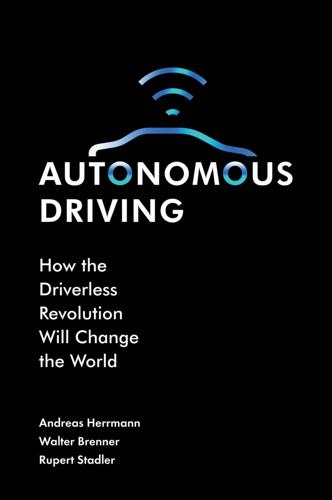
Autonomous Driving: How the Driverless Revolution Will Change the World
by
Andreas Herrmann
,
Walter Brenner
and
Rupert Stadler
Published 25 Mar 2018
J., 2014: Machine Ethics and Automated Vehicles, in: Meyer, G., Beiker, S., Road Vehicles Automation, Berlin, 93 102. [52] Great Britain Department of Transport, 2015: The Pathway to Driverless Cars. [53] Grundwald, A., 2016: Societal Risk Constellations for Autonomous Driving, Analysis, Historical Context and Assessment, in: Maurer, M., Gerdes, C. J., Lenz, B., Winner, H., Autonomous Driving, Berlin, 641 664. [54] Haberle, T., Charissis, L., Fehling, C., Nahm, J., Leymann, F., 2015: The Connected Car in the Cloud: A Platform for Prototyping Telematics Services, in: IEEE Software, 11 17. [55] Haertl, F., Taylor, K., 2015: Connected Car Creating a Seamless Life through the Connected Car, GfK, Nuernberg. [56] Heinrichs, D., 2016: Autonomous Driving and Urban Land Use, in: Maurer, M., Gerdes, C. J., Lenz, B., Winner, H., Autonomous Driving, Berlin, 213 232. [57] Hoff, K. A., Bashir, M., 2015: Trust in Automation: Integrating Empirical Evidence on Factors that Influence Trust, in: Human Factors, 407 434.
…
A drive recorder stores all human and machine activities in the vehicle and thus allows accidents to be reconstructed. The backup level guarantees that a highly automated or autonomous vehicle can fall back into a safe condition whenever a problem might occur. CHAPTER 12 THE CONNECTED CAR Moving from Level 1 to Level 5 automation, the vehicle is transformed from a stand-alone product into a connected car [26]. Vehicles are already connected with their surroundings in many ways, and this connectivity is constantly increasing. One example is vehicle-to-cloud communication (V-to-C), which allow online services such as weather information to enter a vehicle.
…
An additional aspect is that there will be more and more car-related mobility and parking services with the aim of offering the customer not only vehicles, but also mobility in general, with the inclusion of other modes of transport. This will also include the so-called connected-car services, connecting the car with its environment, including the Internet, manufacturer and maintenance garage. In a connected car with all these channels to the outside and passengers that have time on their hands, the provision of content will play a key role. This includes entertainment such as audio and video, but also all apps and information services so that the car becomes a rolling office, information platform or even cinema.
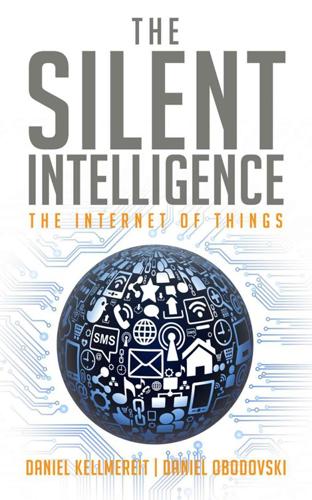
The Silent Intelligence: The Internet of Things
by
Daniel Kellmereit
and
Daniel Obodovski
Published 19 Sep 2013
Sanjay Sarma used Airbnb.com as an example of how things that were almost unthinkable before can become big business and how what used to be a niche market went mainstream. Considering that a connected car, a CloudCar, can always be tracked with GPS, it’s unlikely that it’s going to be hijacked, or at least it can be quickly recovered if it is. There’s probably a big enough market of people who would not mind renting out their car for some time to others.18 Finally, the issue of security applies to all connected cars and homes and needs to be addressed. But the concept of CloudCar goes much further. If I publish the APIs to my car, other services can subscribe to it with my permission.
…
Cars can also communicate with one another and suggest the optimal speed to the driver to get to his or her destination sooner. Today, a rapidly growing industry using connected cars is Usage-Based Insurance, or UBI. Led by Progressive, the concept enables insurance companies to manage risk by better understanding driver behavior. Safe driving behavior gets rewarded with lower insurance premiums, which leads to more safe drivers on the roads. OnStar by GM was one of the first successful connected car applications. Not only does it provide remote assistance, it also has a digital crash signature, based on wide-ranging vehicle sensor data, which notifies emergency services and hospitals of a car crash and potential injuries.24 Just as with other industries, data generated by car sensors will have value that goes beyond the use cases of remote diagnostics, road assistance, navigation, UBI, or inter-car communication.
…
We ask some provocative questions: What role will humans play when a lot of decision-making is done by machines, and might humans ever become a bottleneck to realizing the Internet of Things vision? We also take a peek at what the ubiquitous connectivity between various devices may look like in real terms. Chapter 4 is dedicated to the core industries of M2M. We picked connected cities, connected homes, connected health care, and connected cars. While these areas do not cover all the aspects of M2M (not even close), they do offer great examples of the impact Machine-to-Machine technology will have. We also hope this overview will help readers discover new areas for M2M and the Internet of Things on their own. Chapter 5 starts by discussing the importance of well-defined use cases for the success of a technology or a business.
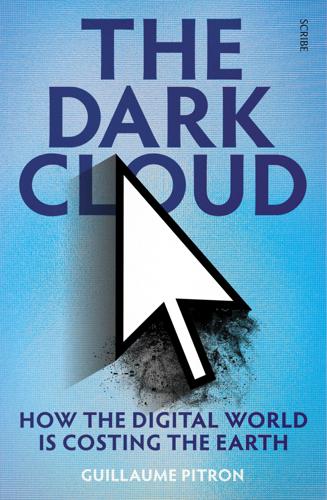
The Dark Cloud: How the Digital World Is Costing the Earth
by
Guillaume Pitron
Published 14 Jun 2023
If there is one technology that 5G will help to mainstream, it is the connected car, because of its capacity to relay huge amounts of data about the surrounding environment. Today, a vehicle with onboard GPS navigation is already ‘connected’. And that’s just the start. Driver-assistance systems are increasingly prevalent: warning signals in the event of a risk of collision; emergency brake assist; electronic steering assist; sensors that monitor blind spots, etc. The advantages in terms of road safety are unquestionable, and over 500 million connected cars are expected to be on the roads worldwide by 2025.44 With onboard GPS suggesting shorter and, therefore, cleaner journeys, this digital revolution also addresses environmental concerns.
…
A connected car is embedded with up to 150 electronic control units, producing, by the most conservative estimates, 25 gigabytes of data per hour.46 Its onboard computer therefore needs as much processing power as 20 laptop computers, and a total of 100 million lines of code to run its software.47 While the number of lines of code alone does not reflect the complexity of the software, we can nevertheless draw comparison with a spaceship, which requires 400,000 lines of code; the Hubble space telescope, which requires two million lines of code; a military drone, 3.5 million lines of code; and a Boeing 787, 14 million lines of code. (See appendix 8.) In other words, a connected car’s software is as bloated as 250 spaceships put together, or 50 Hubble space telescopes, or seven Boeing 787s. A report by US consulting firm McKinsey & Company states that by 2030 a driverless car will require some 300 million lines of code to function.48 The final frontier of the connected car is the driverless car, even if nothing suggests that they will one day find their way onto the road in their millions. ‘Everyone realised that it’s more complicated than we thought.
…
There are also claims that the resulting decrease in the number of road accidents could lead to the manufacture of vehicles that are lighter — therefore releasing fewer emissions — because of the reduced risk of collisions. Read ‘Connected cars could be big energy savers, or not’, Politico, 20 October 2016. 46 Electronic control units (ECUs) control the functioning of the engine and other vehicle components (gearbox, braking system, etc.). See ‘Number of automotive ECUs continues to rise’, ee News Automotive, 15 May 2019. 47 ‘The race for cybersecurity: protecting the connected car in the era of new regulation’, McKinsey & Company, 10 October 2019. 48 Ibid. 49 Interview with Mathieu Saujot, research director, ‘ways of life in transition’, IDDRI, Paris 2020.
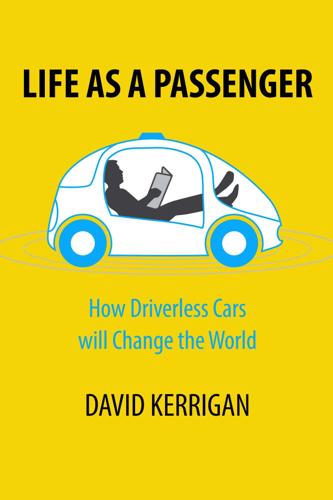
Life as a Passenger: How Driverless Cars Will Change the World
by
David Kerrigan
Published 18 Jun 2017
Shladover, University of California, Berkeley October 2, 2013 [286] http://www.forbes.com/sites/neilhowe/2016/09/15/driverless-cars-unsafe-at-any-speed/ [287] https://newsroom.statefarm.com/download/234883/allstates2015-16deerstats-finalpdf.pdf [288] https://patents.google.com/patent/US9176500B1/ [289] http://www.bloomberg.com/news/articles/2016-09-13/robot-car-ethics-need-urgent-review-in-society-bill-ford-says [290] https://www.inverse.com/article/20716-germany-outlines-three-laws-of-robotics-for-self-driving-cars [291] http://moralmachine.mit.edu/ [292] https://www.researchgate.net/publication/301293464_The_Social_Dilemma_of_Autonomous_Vehicles [293] http://science.sciencemag.org/content/352/6293/1573 [294] https://www.wired.com/2016/06/self-driving-cars-will-power-kill-wont-conscience/ [295] Autonomes Fahren, https://link.springer.com/chapter/10.1007/978-3-662-48847-8_5/fulltext.html [296] http://www-nrd.nhtsa.dot.gov/Pubs/812102.pdf [297] http://www-nrd.nhtsa.dot.gov/pubs/812115.pdf [298] https://www.wired.com/2016/06/self-driving-cars-will-power-kill-wont-conscience/ [299] https://www.theguardian.com/technology/2016/aug/22/self-driving-cars-moral-dilemmas [300] http://wardsauto.com/autonomous-vehicles/google-self-driving-car-passes-woman-wheelchair-chasing-duck-test [301] https://www.1843magazine.com/technology/driving-lessons [302] Fighting Traffic: The Dawn of the Motor Age in the American City, Peter Norton [303] Nicholas Felton, NYT, 2008 [304] https://www.gov.uk/government/publications/driverless-vehicles-impacts-on-traffic-flow [305] http://www.mckinsey.com/industries/automotive-and-assembly/our-insights/disruptive-trends-that-will-transform-the-auto-industry [306] Rise of the Robots: Technology and the Threat of a Jobless Future Hardcover – 2015 [307] https://www.selectusa.gov/automotive-industry-united-states [308] http://www.bls.gov/ooh/transportation-and-material-moving/taxi-drivers-and-chauffeurs.htm [309] http://www.bls.gov/iag/tgs/iagauto.htm [310] http://www.roadandtrack.com/new-cars/future-cars/news/a28053/no-self-driving-porsches/ [311] http://www.ic3.gov/media/2016/160317.aspx [312] https://www.ft.com/content/8eff8fbe-d6f0-11e6-944b-e7eb37a6aa8e [313] https://www.transportation.gov/briefing-room/federal-automated-vehicles-policy-september-2016 [314] https://www.theguardian.com/cities/2015/apr/28/end-of-the-car-age-how-cities-outgrew-the-automobile [315] http://apps.who.int/gho/data/node.main.A995 [316] http://www.worldbank.org/en/news/feature/2016/05/05/transforming-the-worlds-mobility---its-time-for-action [317] http://www.bbc.com/news/magazine-37362728 [318] http://earlyindications.blogspot.ie/2016/08/early-indications-august-2016-next-car.html [319] http://communicationtheory.org/technological-determinism/ [320] http://www.newsweek.com/when-will-we-know-self-driving-cars-are-safe-501270 [321] http://www.consumerreports.org/autonomous-driving/with-autonomous-cars-how-safe-is-safe-enough/ [322] https://one.nhtsa.gov/nhtsa/av/av-policy.html [323] https://www.nhtsa.gov/staticfiles/rulemaking/pdf/Automated_Vehicles_Policy.pdf [324] http://www.post-gazette.com/opinion/Op-Ed/2016/09/19/Barack-Obama-Self-driving-yes-but-also-safe/stories/201609200027 [325] http://www.popsci.com/cars/article/2013-09/google-self-driving-car#page-4 [326] https://isearch.nhtsa.gov/files/Google%20--%20compiled%20response%20to%2012%20Nov%20%2015%20interp%20request%20--%204%20Feb%2016%20final.htm [327] Paul Scullion, safety manager at the Association of Global Automakers [328] http://www.mercurynews.com/2016/09/02/driving-regulation-how-lyft-works-to-shape-ride-hailing-legislation/ [329] https://www.dmv.ca.gov/portal/dmv/detail/vr/autonomous/testing [330] http://money.cnn.com/2017/01/10/technology/new-york-self-driving-cars-ridesharing/index.html [331] https://www.wired.com/2016/05/detroit-wants-go-spot-self-driving-tech-big-automakers/ [332] http://imgur.com/a/gNXJj [333] http://fortune.com/2015/12/02/somerville-driverless-car/ [334] https://en.wikipedia.org/wiki/International_Driving_Permit#The_1949_convention [335] http://www.unece.org/info/media/presscurrent-press-h/transport/2016/unece-paves-the-way-for-automated-driving-by-updating-un-international-convention/doc.html [336] http://www.highwaycode.info/rule/160 [337] http://www.highwaycode.info/rule/126 [338] https://www.gov.uk/government/uploads/system/uploads/attachment_data/file/581577/pathway-to-driverless-cars-consultation-response.pdf [339] http://www.statisticbrain.com/driving-citation-statistics/ [340] http://www.telegraph.co.uk/news/uknews/road-and-rail-transport/11566026/How-is-your-driving-Half-of-drivers-admit-breaking-traffic-laws.html [341] https://www.brookings.edu/wp-content/uploads/2016/06/desouza.pdf [342] http://chicago.suntimes.com/news/7/71/1345175/judge-declares-red-light-speed-cam-tickets-void-city-violated-due-process [343] https://www.congress.gov/bill/115th-congress/senate-bill/680 [344] https://www.ftc.gov/system/files/attachments/press-releases/ftc-nhtsa-conduct-workshop-june-28-privacy-security-issues-related-connected-automated-vehicles/notice_connected_cars_workshop_with_nhtsa_1.pdf [345] https://autoalliance.org/connected-cars/automotive-privacy-2/principles/ [346] https://www.nhtsa.gov/technology-innovation/automated-vehicles [347] https://www.dmv.ca.gov/portal/wcm/connect/58a64bed-2bf3-449f-a270-822c208bb7f0/Volvo.pdf?MOD=AJPERES [348] https://www.automotiveisac.com/best-practices/ [349] https://techcrunch.com/2015/10/23/connected-car-security-separating-fear-from-fact/ [350] http://www.raymondloewy.com/about.html [351] https://www.ft.com/content/97a04f76-3494-11e7-99bd-13beb0903fa3 [352] http://www.bbc.com/news/technology-35301279 [353] https://static.nhtsa.gov/odi/inv/2016/INCLA-PE16007-7876.PDF [354] http://www.reuters.com/investigates/special-report/autos-driverless/ [355] https://en.wikipedia.org/wiki/Stanford_marshmallow_experiment [356] https://www.scribd.com/document/333075344/Apple-Comments-on-Federal-Automated-Vehicles-Policy [357] Remarks at Infrastructure Week, May 2017 [358] Technological Revolutions and Financial Capital, Carlota Perez, 2002 [359] https://www.washingtonpost.com/news/innovations/wp/2014/10/14/move-over-humans-the-robocars-are-coming/ [360] https://www.cnet.com/uk/news/a-brief-history-of-the-qwerty-keyboard/ [361] http://www.wsj.com/articles/could-self-driving-cars-spell-the-end-of-ownership-1448986572 [362] https://www.morganstanley.com/articles/autonomous-cars-the-future-is-now [363] https://www.wired.com/2016/04/american-cities-nowhere-near-ready-self-driving-cars/ [364] Machiavelli, The Prince, Chapter 6 [365] http://time.com/4236980/against-human-driving/ [366] https://www.ft.com/content/e961f914-6ba3-11e6-ae5b-a7cc5dd5a28c [367] Paul Roberts, The Impulse Society: What's Wrong With Getting What We Want, 2014 [368] http://content.time.com/time/magazine/article/0,9171,2033076,00.html [369] http://www.ft.com/intl/cms/s/0/da5d033c-8e1c-11e1-bf8f-00144feab49a.html#axzz1t4qPww6r [370] http://www.wbur.org/bostonomix/2016/04/29/traffic-future-driverless-cars
…
A “Trip Computer” of old A 17” Tesla display You can even go into a gadget store and add smart technology to your existing car. Devices such as the Automatic (see below), that plug into a port in your car and report to an app, can offer smart features such as trip logging, engine light diagnostics, fill-up logging, crash alert, parking tracking and live vehicle tracking to virtually any car. Automatic Connected Car Adaptor and smartphone app. Ford announced a partnership[98] with Amazon to allow you to ask your Amazon Echo to start your car or tell you the remaining range, just with a voice query. Sample Amazon Alexa conversation via Ford SYNC But in a sobering note for those rushing to add more technology to cars, there is evidence that cars which are already becoming bastions of technology are proving too much for some people.
…
Less than ideal situations like construction zones present a level of uncertainty that is currently difficult to manage, while aberrations like potholes or even puddles can unsettle a driverless car - a car whose ”mental” model mistakes a pedestrian for her reflection in a puddle or window can result in undesirable outcomes. In November 2015, in widely reported comments, an electronics researcher for Volkswagen, said at the Connected Car Expo event in Los Angeles that even a tumbleweed in the road can bring a driverless car to a halt.[268] The point is valid in so far as an unknown object represents a challenge to a driverless car where normally none would exist for a human. I agree that we must plan for the unusual but we must also keep some perspective.

Driverless: Intelligent Cars and the Road Ahead
by
Hod Lipson
and
Melba Kurman
Published 22 Sep 2016
A roboticist would argue that the $100 million that has been earmarked for V2X pilots is money that should have been creatively and intelligently spent on addressing challenges in autonomous vehicle research. Not only is the notion of a “connected car” technologically inadequate and out of date, there are several significant practical barriers that ensure that V2X technologies will probably never gain real world traction. The biggest flaw in the U.S. Department of Transportation’s V2X strategy is that connected cars would improve safety and traffic flow only when two conditions are met: cars are fully autonomous (meaning no human is driving) and the majority of the vehicles on the road and all the roadsides are V2X equipped.
…
Given all these shortcomings, why would intelligent people continue to promote the notion of V2X technologies? The answer is that V2X networks could offer tremendous value, but only in a world of fully autonomous vehicles, where connected cars could exchange data with the roadside infrastructure to optimize traffic flow in real-time, prioritize the passage of emergency vehicles, and warn other cars of hazardous road conditions. The great irony of federal plans to develop V2X networks is that the benefits of connected cars emerge only when every single car on the road is fully autonomous. Perhaps in the future, a new generation of hardware devices could reduce the cost of creating intelligent highways.
…
Driverless cars require extensive investment in infrastructure. The software that guides driverless cars relies on clear lane marks, but beyond that, driverless cars require no special infrastructure. One reason for this misperception could be that for decades, the U.S. Department of Transportation has focused its resources on promoting its vision of a connected car, a scenario in which cars and roadside infrastructure are equipped with expensive wireless transmitters to share data. In contrast, driverless cars will use robotic machine-vision technologies and stored digital map data that place the intelligence into the car, not into the road. Driverless cars represent an ethical dilemma.
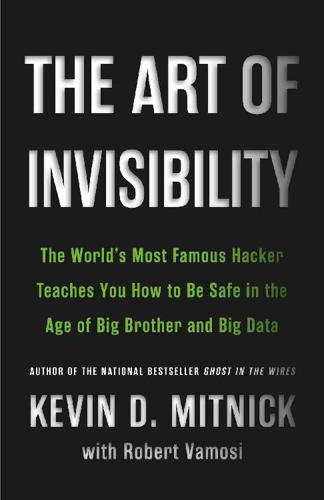
The Art of Invisibility: The World's Most Famous Hacker Teaches You How to Be Safe in the Age of Big Brother and Big Data
by
Kevin Mitnick
,
Mikko Hypponen
and
Robert Vamosi
Published 14 Feb 2017
Tammany Parish Sheriff’s Office, the Jefferson Parish Sheriff’s Office, and the Kenner Police Department, in Louisiana; the Hialeah Police Department, in Florida; and the University of Southern California Department of Public Safety. 17. http://www.forbes.com/sites/robertvamosi/2015/05/04/dont-sell-that-connected-car-or-home-just-yet/. 18. https://www.washingtonpost.com/blogs/the-switch/wp/2015/06/24/tesla-says-its-drivers-have-traveled-a-billion-miles-and-tesla-knows-how-many-miles-youve-driven/. 19. http://www.dhanjani.com/blog/2014/03/curosry-evaluation-of-the-tesla-model-s-we-cant-protect-our-cars-like-we-protect-our-workstations.html. 20. http://www.teslamotors.com/blog/most-peculiar-test-drive. 21. http://www.forbes.com/sites/kashmirhill/2013/02/19/the-big-privacy-takeaway-from-tesla-vs-the-new-york-times/. 22. http://www.wired.com/2015/07/gadget-hacks-gm-cars-locate-unlock-start/. 23. http://spectrum.ieee.org/cars-that-think/transportation/advanced-cars/researchers-prove-connected-cars-can-be-tracked. 24. http://www.wired.com/2015/10/cars-that-talk-to-each-other-are-much-easier-to-spy-on/. 25. https://grahamcluley.com/2013/07/volkswagen-security-flaws/. 26. https://grahamcluley.com/2015/07/land-rover-cars-bug/. 27. http://www.wired.com/2015/07/hackers-remotely-kill-jeep-highway/. 28. http://www.forbes.com/sites/robertvamosi/2015/03/24/securing-connected-cars-one-chip-at-a-time/. 29. http://www.nytimes.com/2016/07/30/business/tesla-faults-teslas-brakes-but-not-autopilot-in-fatal-crash.html.
…
Afterward, the researchers faced some criticism for being “reckless” and “dangerous.” Greenberg’s Jeep was on a public road, not on a test track, so Missouri law enforcement is, at the time of this writing, still considering pressing charges against Miller and Valasek—and possibly Greenberg. Hacking connected cars remotely has been talked about for years, but it took Miller and Valasek’s experiment to get the automobile industry to pay attention. Whether it was “stunt hacking” or legitimate research, it got car manufacturers to start thinking seriously about cybersafety—and about whether Congress should prohibit the hacking of automobiles.2 Other researchers have shown they can reverse engineer the protocol controlling your vehicle by intercepting and analyzing the GSM or CDMA traffic from your car’s onboard computer to the automaker’s systems.
…
Instead they conducted their controlled experiment with Greenberg in Miller’s hometown. In this chapter I’ll discuss the various ways the cars we drive, the trains we ride, and the mobile apps we use to power our daily commute to work are vulnerable to cyberattacks, not to mention the numerous privacy compromises that our connected cars introduce into our lives. When Johana Bhuiyan, a reporter for BuzzFeed, arrived at the New York offices of Uber, the car-calling service, in one of Uber’s own cars, Josh Mohrer, the general manager, was waiting. “There you are,” he said, holding up his iPhone. “I was tracking you.” It was not an auspicious start to their interview, which touched upon, among other things, consumer privacy.4 Until Bhuiyan’s story appeared, in November of 2014, few outside of Uber were even aware of God View, a tool with which Uber tracks the location of its thousands of contract drivers as well as their customers, all in real time.

The Internet Is Not the Answer
by
Andrew Keen
Published 5 Jan 2015
Indeed, South Korean electronics giant LG’s connected televisions are so intelligent that they are already logging our viewing habits in order to serve us up targeted ads.26 Another part of CES was dedicated to the connected car—automobiles that are so all-seeing they know our speed, our location, and whether or not we are wearing our seat belt. According to the consultancy Booz, the market for connected cars is about to explode, with demand expected to quadruple between 2015 and 2020 and generate revenues of $113 billion by 2020.27 But even today’s connected car is a data machine, with the onboard cameras from Mercedes-Benz’s new S-Class saloon already generating 300 gigabytes of data per hour about the car’s location and speed and the driver’s habits.28 And then there’s Google’s driverless car, an artificially intelligent, networked car that is driven by software called Google Chauffeur.
…
Reporting about CES, the Guardian’s Dan Gillmor warned that networked televisions that “watch us” are “closing in on Orwell’s nightmarish Big Brother vision.”32 Even industry executives are fearful of the Internet of Things’s impact on privacy, with Martin Winterkorn, the CEO of Volkswagen, warning in March 2014 that the connected car of the future “must not become a data monster.”33 But there is one fundamental difference between the Internet of Things and Erich Mielke’s twentieth-century Big Brother surveillance state, one thing distinguishing today’s networked society from Orwell’s 1984. Mielke wanted to create crystal man against our will; in today’s world of Google Glass and Facebook updates, however, we are choosing to live in a crystal republic where our networked cars, cell phones, refrigerators, and televisions watch us.

Driverless Cars: On a Road to Nowhere
by
Christian Wolmar
Published 18 Jan 2018
They rarely refer to these levels, and this results in ill-informed journalists simply parroting the sort of claims made about the imminent arrival of driverless cars mentioned in the previous chapter. Shared use There is undoubtedly a trend, particularly among millennials, of being less interested in owning – or even driving – a car compared with the previous generation. A PriceWaterhouseCoopers report on connected cars suggests that ‘urban residents in Western markets appear to be losing interest in owning their own cars, a trend exacerbated by their desire to move to urban areas, where cars simply aren’t a requirement, and where public transport and ride-sharing apps can easily fulfil their needs’.29 Indeed.
…
Connected and autonomous vehicles: the future? House of Lords Paper 115 (http://bit.ly/2f1aBbK). 27. K. Naughton. 2017. Ford’s dozing engineers side with google in full autonomy push. Bloomberg Technology website, 17 February (https://bloom.bg/2kFiYKQ). 28. See note 9. 29. R. Vierecki et al. 2016. Connected car report 2016: opportunities, risk, and turmoil on the road to autonomous vehicles. Strategy&, 28 September (https://pwc.to/2wUs3IT). 30. Interview with the author. 116 Endnotes 31. R. Dingess. 2017. Effective road markings are key to an auto- mated vehicle future. Top Marks (the magazine of the Road Safety Markings Association), Edition 19. 32.
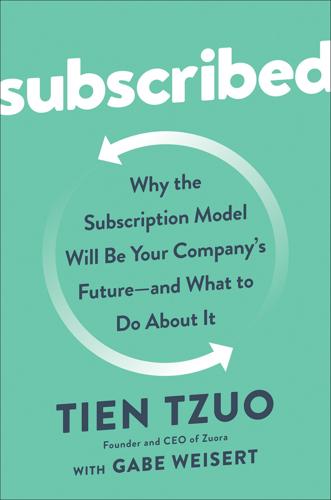
Subscribed: Why the Subscription Model Will Be Your Company's Future - and What to Do About It
by
Tien Tzuo
and
Gabe Weisert
Published 4 Jun 2018
CELL PHONES ON WHEELS Today the accepted Silicon Valley wisdom is that as cars turn into cell phones on wheels, software will inevitably trump hardware, just as Microsoft trumped IBM. As lithium batteries replace combustion engines, automobile hardware will become commodified, and the new growth market will be in information services. The analyst firm Gartner predicts that there will be 250 million connected cars on the road by 2020. That means one in every three cars on the road will be connected. By then, digital diagnostics, infotainment channels, and enhanced navigation systems are expected to constitute a $270 billion industry, up from $47 billion today. At some point, the data and services associated with a vehicle may be worth more than the vehicle itself (much like a cell phone!).
…
They’ve been hard at work putting sensors into everything they make: doors, chairs, pipes, tiles, windows, tables, sidewalks, rebar, lights, shoes, bottles, tires, bricks, etc. According to various predictions, by 2020 we’re expected to have more than a billion smart meters, 100 million connected lightbulbs, more than 150 million 4G-connected cars, 200 million smart home units, several billion smart clothing units, more than 90 million wearables. And what do these sensors allow these products to do? Collect and transmit data—lots of it. All of these products will be beaming information back into centralized servers, so companies can start using analytic platforms to look for patterns and ways to improve things (you want to talk big data?
…
You Will Subscribe to It,”Slate, December 2, 2017, www.slate.com/articles/technology/technology/2017/12/car_subscriptions_ford_volvo_porsche_and_cadillac_offer_lease_alternative.html. a sports bar, with a bartender “The Rev-Up: Imagining a 20% Self Driving World,” The New York Times, November 8, 2017, www.nytimes.com/interactive/2017/11/08/magazine/tech-design-future-autonomous-car-20-percent-sex-death-liability.html?_r=0. 250 million connected cars on the road by 2020 “Gartner Says by 2020, a Quarter Billion Connected Vehicles Will Enable New In-Vehicle Services and Automated Driving Capabilities,” January 26, 2015, www.gartner.com/newsroom/id/2970017. Without control over the platform, PC hardware Horace Dediu, “IBM and Apple: Catharsis,” July 15, 2014, www.asymco.com/2014/07/15/catharsis.

The Industries of the Future
by
Alec Ross
Published 2 Feb 2016
For context, the GDP: “Report for Selected Country Groups and Subjects,” International Monetary Fund: World Economic Outlook Database, October 2014, http://www.imf.org/external/pubs/ft/weo/2014/02/weodata/weorept.aspx?pr.x=41&pr.y=10&sy=2014&ey=2014&scsm=1&ssd=1&sort=country&ds=.&br=1&c=001%2C998&s=NGDPD%2CPPPGDP&grp=1&a=1. The first is the number of: Keith Naughton, “The Race to Market the Connected Car,” Automotive News, January 10, 2014, http://www.autonews.com/article/20140110/OEM06/301109910/the-race-to-market-the-connected-car. According to a Juniper research report: “Smart Home Revenues to Reach $71 Billion by 2018, Juniper Research Finds,” Juniper Research, February 11, 2014, http://www.juniperresearch.com/viewpressrelease.php?pr=429. A McKinsey report projects: James Manyika and Michael Chui, “All Things Online,” McKinsey Global Institute, McKinsey & Company, September 23, 2013, http://www.mckinsey.com/insights/mgi/in_the_news/all_things_online.
…
Chambers predicts that the Internet of Things will grow to be a $19 trillion global market. For context, the GDP of the entire world is currently just a little more than $100 trillion. The growth of the Internet of Things is motivated by four main drivers. The first is the number of Internet-connected cars on the road, expected to grow from 23 million in 2015 to 152 million in 2020. The second driver is the advent of wearable technology, which doubled in use between 2013 and 2014. The third driver is the addition of smart controls in our homes, from thermostats to security systems to just about everything else.
…
In July 2015, hackers managed to remotely infiltrate and shut down a Jeep Cherokee while it was speeding along the highway. What if, 20 years from now when some variant of the Google car has taken over the highways, someone were to hack the entire network of Google cars? Imagine a highway’s worth of connected cars all going haywire at the same time—the potential for a pileup bigger than anything we’ve ever seen. Soon all the networked “things” in our lives could potentially be used as hacking platforms. It’s hard to imagine your refrigerator being hacked, but the reality is that it has already happened.

The Startup Way: Making Entrepreneurship a Fundamental Discipline of Every Enterprise
by
Eric Ries
Published 15 Mar 2017
If we’re not using an experiment to test an assumption, it’s not giving us useful information. THE CONNECTED CAR After the meeting with Toyota executives I described in Chapter 1 took place, Matt Kresse, a researcher at the company’s innovation hub, the InfoTechnology Center (ITC), and those same executives agreed to the idea of a Lean Startup project. In March of 2013, Kresse and Vinuth Rai, director of the Toyota InfoTechnology Center, began a series of experiments designed to discover and develop state-of-the-art technology for an Internet-connected car. Their first step was to test an assumption: They ran an ad on Craigslist under the heading “Do you hate your commute?
…
See teams Crossing the Chasm (Moore) culture, itr.1, itr.2, 1.1, 2.1, p02.1, p02.2, 6.1 incubating of startups, p01.1, 3.1 Startup Way, 5.1, 5.2, 5.3, 8.1 transformation and, 6.1, 7.1 customers, itr.1, 1.1, 1.2, 1.3, 2.1, 3.1, 4.1, 5.1, 6.1, 6.2, 6.3, 7.1 Amazon and, 3.1, 4.1 Citi D10X and designing an experiment for engagement of growth hypothesis and innovation accounting and Lean Startup method and, 7.1, 7.2 modern company and, 1.1, 1.2 MVPs and, 4.1, 4.2, nts.1n1 per-customer learning metrics startups and value and growth hypotheses See also leap-of-faith assumptions cycle time, 4.1, 6.1, 6.2, 6.3, 6.4 DeLeonardo, Guy, 6.1 Dickerson, Mikey, 3.1, p02.1, p02.2, 6.1, 7.1, 7.2, 7.3, 8.1 Dollar Shave Club Dropbox, itr.1, p01.1, 1.1, 6.1, 6.2, 6.3, 7.1, 9.1 Drucker, Peter, nts.1n6, nts.2n1 Duncan, Robert, n2 Durvy, Mathilde Eisenmann, Tom, 11.1 Ellis, Sean Emerald Cloud Lab, p01.1, 5.1 employees, itr.1, 1.1, 2.1, 3.1, 3.2 company’s culture and creative, itr.1, 1.1, 1.2, 2.1, 5.1 as entrepreneurs, itr.1, itr.2, itr.3, itr.4, itr.5, 1.1, 2.1, 2.2, 2.3, 2.4, 9.1, p03.1 equity ownership, 3.1, 8.1 hiring, itr.1, 2.1, 3.1, 3.2, 7.1, 8.1, nts.1n4 incentivizing, 5.1, 8.1 non-compete agreements, 11.1, nts.1n5 performance evaluation Startup Way and, 5.1, 5.2, 5.3 entitlement funding, 1.1, 3.1, 7.1 entrepreneurial management, itr.1, itr.2, itr.3, itr.4, 5.1, 5.2, epl.1 entrepreneurs, itr.1, 1.1 within a company, itr.1, itr.2, itr.3, itr.4, itr.5, 1.1, 2.1, 2.2, 2.3, 2.4, 9.1, p03.1 factors that motivate “plausible promise,” recognizing, 2.1, 2.2, 2.3, 2.4 teaching skills of UBI and, 11.1, nts.1n20 entrepreneurship (missing function), itr.1, itr.2, itr.3, 2.1, 2.2, 2.3, 9.1, p03.1, 10.1 1st responsibility 2nd responsibility boundary-blurring of as a career path, 3.1, p03.1, 10.1 coaching and, 2.1, 7.1, 10.1 corporate, 10.1, 10.2 integration of learning by doing missing organizational capabilities and, 2.1, 5.1 non-entrepreneurs and, 2.1, 10.1 organizational structure and, 2.1, 2.2, 5.1, 5.2, 10.1, 10.2 responsibilities and scope unified theory of equity ownership, 3.1, 8.1, nts.1n8, nts.2n10 Essey, Ed, 7.1 executive-level champions executive sponsors, 6.1, 7.1, 7.2, 7.3, 9.1 experimentation, p01.1, 2.1, 2.2, 2.3, 4.1, 4.2, 6.1, 7.1, 8.1, 8.2, 10.1, 11.1, 11.2 business model experiments compensation and designing an experiment funding innovation accounting and Lean Startup method and metrics and modern management, itr.1, 1.1, 2.1, 6.1 MVPs and, 2.1, 4.1, 6.1 organizational support, 2.1, 3.1, 4.1, p03.1, epl.1 Phase One and, p02.1, 6.1 process for, 4.1, 5.1, 6.1, 9.1 rapid, itr.1, itr.2, 1.1, 1.2, 1.3, 1.4, 4.1, 4.2, 5.1 testing assumptions working by exception Facebook, itr.1, 1.1, 1.2, 3.1, 3.2, 3.3, 6.1, 7.1, 7.2, 8.1, 9.1 failure at Amazon, 1.1, 3.1, 5.1 at Dropbox experimentation and, 3.1, 5.1, 6.1 leadership and productive failures, 1.1, 2.1 risks and liabilities, 7.1, 11.1 startups and, 1.1, 1.2, 2.1, 9.1 traditional approach to, 1.1, 1.2 See also validation learning Fante, Matt Ferdowsi, Arash finance, 2.1, 2.2, 9.1 board/investor dynamics department, 8.1, 8.2 entitlement funding, 3.1, 7.1, 9.1 equity ownership, 3.1, 8.1 innovation accounting and internal startups and, 7.1, 9.1, 9.2, 9.3, 9.4, 10.1 metered funding, 3.1, 7.1, 7.2, 9.1 milestones and, 2.1, 4.1, 5.1, 8.1 seed-stage funding startups, 3.1, 3.2, 5.1, 9.1 See also innovation accounting; venture capital Flannery, John, 8.1, 8.2 Flight of the Creative Class, The (Florida), 11.1 Florida, Richard Ford, Henry Ford, Jason forecasts, 1.1, 1.2, 2.1, 2.2, 3.1, 6.1, 6.2, 9.1 founders, 5.1, 6.1, 7.1, 7.2, 8.1, 8.2, 8.3, 8.4, 9.1, 9.2, 9.3, 9.4, p03.1, 10.1, nts.1n10 “founder mentality,” immigrant Frezza, Brian, 5.1, nts.1n10 Gabler, Neal, 8.1 Gallagher, Leigh, 8.1, 8.2 gatekeepers, 8.1, 9.1, 9.2 GE (General Electric), itr.1, itr.2, itr.3, itr.4, 1.1, 2.1, 6.1, 6.2, p03.1 appliances, 2.1, 7.1, nts.1n5 backup power system project, 6.1, nts.1n8 Business Innovations business model experiments Corporate Audit Staff cross-functional teams Current Employee Management System ERP systems executive-level champions FastWorks, itr.1, itr.2, 1.1, 2.1, 2.2, 2.3, 4.1, 6.1, 6.2, 6.3, 6.4, 6.5, 7.1, 7.2, 8.1, 8.2, 8.3, 9.1, 9.2, 10.1, nts.1n2 FastWorks Everyday, 2.1, 8.1 FLE project GE Beliefs, 6.1, 8.1 growth boards, 6.1, 7.1, 9.1, nts.1n3 Imagination Breakthrough Oil & Gas, 9.1, nts.1n1 PD@GE, 8.1, p03.1, 10.1 Series X, itr.1, itr.2, itr.3, 2.1, 6.1, 6.2 Six Sigma, 1.1, 7.1 Sustainable Healthcare Solutions transformation, 6.1, 6.2, 6.3 Ventures Gebbia, Joe, 8.1, 8.2, 8.3 Gebhardt, Eric, 9.1, 9.2 Gelobter, Lisa, 4.1, 4.2, 7.1 Gesher, Ari, p01.1, nts.1n3 Global Innovation Fund (GIF), 7.1, 11.1, nts.1n6 “Golden Sword,” 6.1, 6.2 Goldstein, Viv, 6.1, 6.2, 6.3, 7.1, 7.2, 8.1, 8.2, 10.1, 10.2 Google, 3.1, 3.2, p02.1, p02.2, 6.1, 7.1 Ads Gorman, Marilyn, n1 GM (General Motors) Groupon growth, itr.1, itr.2, p01.1, 1.1, 1.2 engines of entrepreneurship and failure and, 1.1, 6.1 hockey-stick pattern, 3.1, 3.2, 6.1, 7.1, 9.1, 9.2 law of sustainable growth long-term, itr.1, 1.1, 6.1, 9.1, 9.2 modern company and, 1.1, 1.2 short-term growth boards, 4.1, 6.1, 6.2, 6.3, 7.1, 7.2, 7.3, 9.1, 10.1, nts.1n9 funding and, 9.1, 9.2 how they operate how to set up three responsibilities of growth hypothesis, 4.1, 4.2, 9.1 Hammond, Samuel, 11.1 Harvard Business School HealthCare.gov, 2.1, p02.1, 6.1, 6.2, 7.1, 7.2, 8.1, 11.1 health care systems Hipmunk Hoffman, Reid, p03.1, nts.1n1 Holmes, Ryan Hootsuite Hopkins, Debby Horowitz, Ben Houston, Drew HR (human resources), 8.1, 10.1, 10.2 hypergrowth, p01.1, 2.1, 3.1, 6.1 Hysen, Eric, 8.1, 8.2 IBM, 6.1, 7.1 I-Corps, 11.1, 8.1 Immelt, Jeffrey, itr.1, 1.1, 5.1, 6.1, 6.2, 6.3, 6.4, 7.1, 7.2, 7.3 IMVU, 3.1, 9.1, 9.2, 9.3 innovation, itr.1, itr.2, itr.3, itr.4, 1.1, 1.2, 1.3, 1.4, 1.5, 2.1 company-wide continuous, itr.1, itr.2, itr.3, p01.1, 1.1, 1.2, 1.3, 2.1, 4.1, 8.1, 10.1 management for, itr.1, 1.1, 1.2, 5.1 organizational structure and, p01.1, 1.1, 1.2, 1.3, 2.1 “sustaining innovations,” n3 See also entrepreneurship innovation accounting (IA), itr.1, 1.1, 8.1, 9.1 audit bingo cards, 9.1, 9.2, 9.3 finance’s role growth boards Level 1 dashboard, 9.1, 9.2, 9.3, 9.4 Level 2 dashboard, 9.1, 9.2 Level 3 dashboard, 9.1, 9.2 net present value and, 9.1, 9.2, 9.3 NPS score per-customer learning metrics quantifying learning and, 9.1, 9.2 three levels of what it is Innovator’s Dilemma, The (Christensen), 2.1, 9.1 internal startups (or startup projects), itr.1, p01.1, 1.1, 2.1, 2.2, 2.3, 2.4, 2.5, 2.6, 5.1, 7.1, 8.1 as atomic unit of work, itr.1, itr.2, 2.1, 2.2, 3.1 backlash for success of company-wide innovation compensation and constraints and funding, 2.1, 7.1, 7.2, 9.1, 9.2, 9.3, 9.4, 10.1 growth boards and, 7.1, 9.1 guidance document for hidden integrating killing, 5.1, 9.1, 9.2 leadership and, 5.1, 7.1, 9.1 scope creep, 1.1, 2.1 teams for working by exception, 6.1, 7.1 Intuit, itr.1, itr.2, 2.1, 7.1, 8.1 Design for Delight, 4.1, 6.1, 7.1 Lean StartIN program MVPs and, 4.1, 4.2, 4.3, app2.1 TurboTax division IT (information technology) department, 8.1, 10.1, 10.2 iterations, 4.1, 4.2, 4.3, 5.1, p02.1, 6.1, 6.2, 8.1, 8.2, 8.3 Jackson, Todd, 1.1, 6.1, 6.2, 9.1 Jobs, Steve, 2.1, 2.2, 10.1 Jurado Apruzzese, Susana Kidder, David, 7.1, 9.1, 9.2, 9.3 Kodak Kresse, Matt Kundra, Vivek Lawson, Jeff, 3.1 Leader’s Guide, The (Ries), 4.1, 4.2, nts.1n3 leadership, 1.1, 4.1, 5.1 for entrepreneurship, itr.1, 2.1, 2.2 “Golden Sword” for, 6.1, 6.2 loss of metrics and modern company, 1.1, 1.2 for transformation, 7.1, 10.1, 10.2, 9.1 Lean Impact lean manufacturing theory, 1.1, 4.1, 5.1, 5.2, 5.3, 6.1, 7.1, 8.1 Lean Startup, The (Ries), itr.1, itr.2, itr.3, itr.4, 1.1, 3.1, 3.2, 3.3, 3.4, 4.1, 4.2, 5.1, 6.1, 9.1, 10.1, 11.1, 11.2, 11.3 Lean Startup method, itr.1, itr.2, itr.3, 2.1, 3.1, 4.1, 6.1, 6.2, 7.1, 10.1 ethos of, 1.1, 3.1, 11.1 “founder mentality,” teaching of how the Lean Startup works for leaders living its philosophy teaching of tools and processes of Toyota and vision and See also specific factors leap-of-faith assumptions (LOFA), 4.1, 4.2, 4.3, 6.1, 9.1, 9.2 GE’s, 4.1, 6.1, 6.2 at Intuit MVP Scoring Chart, 4.1 Prioritizing, 4.1 testing, 4.1, 4.2 three-question survey value and growth hypotheses Lefler, Brian, 6.1, 8.1 legal departments Liguori, Steve, 6.1, 7.1, nts.1n1 Liker, Jeffrey LinkedIn Little, Mark, 6.1, nts.1n3 Long-Term Stock Exchange (LTSE, ltse.com), 11.1 Mahan, Michael, 2.1, 7.1 Malatack, Patrick, 4.1, 6.1 management, 1.1, 2.1 of corporate teams the entrepreneurial function for innovation, 1.1, 1.2, 1.3 legacy systems of modern company portfolio, 1.1, 1.2, 2.1, 5.1 traditional, 1.1, 1.2, 2.1, 2.2, 2.3 See also entrepreneurial management marketplace of uncertainty, 1.1, 4.1 Marx, Karl Mazzucato, Mariana McChrystal, Stanley meritocracy, 2.1, 2.2, 3.1 metered funding, 1.1, 3.1, 3.2, 7.1, 7.2, 8.1, 9.1 metrics, 2.1, 2.2, 3.1, 4.1, 6.1, 9.1 GE Oil & Gas leading indicators, 3.1, 4.1, 6.1, 9.1, 9.2, 9.3, nts.1n1 “one metric that matters,” per-customer learning metrics ROI, 1.1, 2.1, 3.1, 6.1, 7.1, 9.1, 9.2, 9.3, p03.1 simplified startup-style types of validated learning and, 4.1, 6.1 vanity metrics, 1.1, 3.1, 4.1, 9.1 See also innovation accounting metrics dashboard Microsoft Microsoft Garage middle managers, itr.1, 1.1, 2.1, 5.1, 6.1, 7.1, 7.2, 9.1 Miguel, Pedro milestones, 2.1, 4.1, 5.1, 8.1, 9.1 Miller, Jamie, n3 minimum viable product (MVP), itr.1, itr.2, 2.1, 3.1, 4.1, 4.2, 4.3, 4.4, 5.1, 7.1, p03.1, nts.1n9 build-measure-learn loop and College Scorecard’s, 4.1, 4.2, 4.3 cycle time and, 4.1, 6.1 at GE, 4.1, 6.1, 6.2, 6.3, 8.1, nts.1n8 I-Corps and Internet-connected car at Intuit, 4.1, 4.2, app2.1 risk containment and types of modern company dealing with failure, 1.1, 1.2 entrepreneurship and, itr.1, itr.2, 1.1, 2.1, 2.2, 2.3 hallmark of how companies grow up identifying, versus traditional leaders’ role, 1.1, 1.2, 1.3 legacy and management approach for management portfolio for marketplace of uncertainty Moltke, Helmuth von Moore, Geoffrey Moskovitz, Dustin Mullenweg, Matt Musk, Elon My Years with General Motors (Sloan) Nelson, Cory, 2.1, 6.1, 6.2, nts.1n1 Netflix net promoter score (NPS) Ng, Roy Niskanen Center Obama, Barack, 2.1, 4.1, p02.1, 6.1, 7.1, 11.1, 11.2 Ohanian, Alexis O’Reilly, Tim organizational structure, itr.1, itr.2, 2.1, 2.2, 2.3, 5.1, 5.2, 5.3, 10.1 charts, 2.1, 5.1, 10.1 outcomes of transformation silos, 1.1, 5.1, 10.1 underground network, 2.1, 7.1 Pahlka, Jennifer, 7.1 Palantir, p01.1, 10.1 Park, Todd, p02.1, 6.1, 6.2, 7.1, 7.2, 9.1, 10.1, 11.1 PayPal, 4.1, 9.1 Peters, Susan, n3 Phase One (critical mass), p02.1, p02.2, 6.1 common patterns cross-functional teams and designing an experiment language for measuring success and motivations for starting small wielding the Golden Sword working by exception, 6.1, 7.1 Phase Two (scaling up), p02.1, p02.2, 7.1 backlash and, 7.1, 7.2 challenges of pilot teams common patterns crossing the chasm, 7.1, 7.2 executive champions, 7.1, 7.2 growth boards for, 7.1, 7.2 internal coaching for metered funding and, 7.1, 7.2 resistance from within, 7.1, 7.2 sharing information training for widespread rollout for Phase Three (deep systems), p02.1, p02.2, 8.1 “building that airplane,” compensation and hiring cultural acclimation departments involved guidance document for procurement systems second founding and pivot, itr.1, itr.2, 3.1, 3.2, 4.1, 4.2, 4.3, 7.1, 8.1, 8.2, 9.1 pivot-or-persevere meeting, 4.1, 4.2, 4.3, 9.1, 9.2 the pivot to oblivion vision and, 3.1, 3.2, 4.1, 4.2, 4.3 what it is, 3.1, 3.2, 4.1, 4.2 Pivotal (software company) Presidential Innovation Fellows (PIF) program, 2.1, 6.1, 7.1, 8.1 Principles of Scientific Management, The (Taylor), 11.1 process, itr.1, 6.1 Lean Startup Startup Way, 5.1, 5.2, 5.3 product, 1.1, 1.2, 1.3, 2.1, 3.1, 4.1, 5.1, 5.2, 7.1 Andreessen on hypergrowth and creating the right, 5.1, 6.1, nts.1n6 cycle time, 4.1, 6.1 distribution experiments for testing LOFA and MVP testing, 4.1, 4.2 NPIs public policy changes, 11.1, nts.1n1 Rackspace Rai, Vinuth, 6.1, 6.2 reddit Revolution LLC, n2 Richards, James RIM Rise of the Rest Rosenstein, Justin Ruskin, Mollie Ruthenbeck, Justin SafeBoda Sandberg, Sheryl scale, 5.1, p02.1, 6.1, 8.1, 9.1 See also Phase Two (scaling up) Schwartz, Mark, 8.1 scope creep, 1.1, 2.1, 6.1 Seattle Children’s Hospital second founding, itr.1, 8.1, 9.1, p03.1 seed funding, 9.1, 9.2 Semper, Janice, 6.1, 6.2, 7.1, 7.2, 8.1, 8.2, 8.3, p03.1, 10.1, 10.2 Sferruzza, Silvio, 4.1, 4.2 short-termism, 11.1, epl.1 Silicon Valley, p01.1, 2.1, 3.1, 3.2, 11.1, 11.2, 11.3, nts.1n1, nts.2n3, nts.3n5 UBI and Simonelli, Lorenzo Sloan, Alfred Smith, Aubrey, n1 Smith, Brad, 2.1, 8.1 Smith, Dan Smith, Jeff, 6.1, 7.1, 10.1 Smith, Noah Smith, Ryan, 8.1, 8.2 Stanford University, 11.1, 11.2 Stanley, Kath startups (Silicon Valley-style), itr.1, 1.1, 1.2, 1.3, 2.1, 2.2, 2.3, 3.1, 7.1, 7.2 Andreessen on asset value, 3.1, nts.1n8 boards, 3.1, 7.1, 9.1, 9.2, nts.1n14 culture, p01.1, 3.1 customer and entrepreneurship as career failure and, 1.1, 1.2, 5.1 fantasy plan, 1.1, 6.1, 6.2, 9.1, 9.2, 9.3, 9.4 fatal pitch and finance and, 3.1, 3.2, 7.1 fundamental cycle time health insurance and how to make more valuable management and, itr.1, 3.1 as meritocracy, 3.1, nts.1n18 metered funding and risk metrics for, 2.1, 2.2, 3.1, 4.1, 4.2 mission and vision driven, 3.1, 4.1 Musk’s three “eras,” rapid or hypergrowth, itr.1, 5.1, 6.1 small businesses versus teams, 3.1, 6.1, p03.1 “Think big.
…
Scale fast,” unemployment insurance Taylor, Frederick Winslow, 8.1 Team of Teams (McChrystal) teams attracting members corporate, typical, 3.1, 3.2 cross-functional, 1.1, 6.1, 6.2, p03.1, 10.1, 10.2, 10.3 executive sponsors, 6.1, 7.1, 7.2 focus on, 3.1, nts.1n3 incentivizing island of freedom or sandbox milestones for, 2.1, 5.1 modern company morale, 6.1, 7.1 small versus big, 3.1, p02.1 startup teams, 3.1, 6.1, p03.1 two-pizza team, 1.1, 5.1 Techstars, 2.1, 7.1, 7.2 Telefónica Tomoyama, Shigeki, 1.1, 6.1 Toyota, itr.1, 1.1, 6.1, 11.1 InfoTechnology Center (ITC) Internet-connected car TPS, 1.1, 1.2, 8.1 transformation (organizational), itr.1, itr.2, itr.3, p01.1, 6.1, p03.1, 10.1 beginning of common patterns energy (motivation) for outcomes of Phase One, p02.1, p02.2, 6.1 Phase Two, p02.1, p02.2, 7.1 Phase Three, p02.1, p02.2, 8.1 Phases and Scales, p02.1, 9.1 three questions for unified theory of Twilio, itr.1, 3.1, 4.1, 6.1 Twitter uncertainty, 1.1, 2.1, 7.1, 10.1 unicorn startup, 1.1, 11.1 unified theory of entrepreneurship universal basic income (UBI), 11.1, nts.1n20 USAID, U.S.
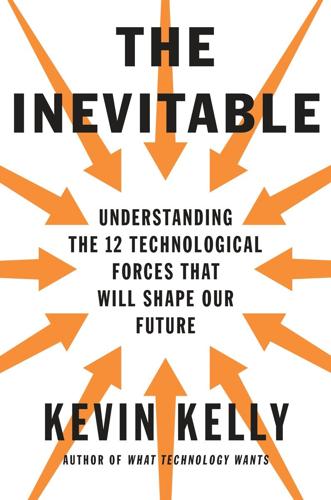
The Inevitable: Understanding the 12 Technological Forces That Will Shape Our Future
by
Kevin Kelly
Published 6 Jun 2016
Smart silicon enhances a car’s engine performance, braking, safety—and all the more true for electric cars. This rolling computer is about to be connected and become an internet car. It will sport wireless connection for driverless navigation, for maintenance and safety, and for the latest, greatest HD 3-D video entertainment. The connected car will also become the new office. If you are not driving in your private space, you will either work or play in it. I predict that by 2025 the bandwidth to a high-end driverless car will exceed the bandwidth into your home. As cars become more digital, they will tend to be swapped and shared and used in the same social way we swap digital media.
…
The computer manufacturer Cisco estimates that there will be 50 billion devices on the internet by 2020, in addition to tens of billions of screens. The electronics industry expects a billion wearable devices in five years, tracking our activities, feeding data into the stream. We can expect another 13 billion appliances, like the Nest thermostat, animating our smarthomes. There will be 3 billion devices built into connected cars. And 100 billion dumb RFID chips embedded into goods on the shelves of Walmart. This is the internet of things, the emerging dreamland of everything we manufacture that is the new platform for the improbable. It is built with data. Knowledge, which is related, but not identical, to information, is exploding at the same rate as information, doubling every two years.
…
“how to make people click ads”: Ashlee Vance, “This Tech Bubble Is Different,” Bloomberg Business, April 14, 2014. 4 billion screens lit today: Calculation based on the following: Charles Arthur, “Future Tablet Market Will Outstrip PCs—and Reach 900m People, Forrester Says,” Guardian, August 7, 2013; Michael O’Grady, “Forrester Research World Tablet Adoption Forecast, 2013 to 2018 (Global), Q4 2014 Update,” Forrester, December 19, 2014; and “Smartphones to Drive Double-Digit Growth of Smart Connected Devices in 2014 and Beyond, According to IDC,” IDC, June 17, 2014. 50 billion devices on the internet by 2020: “Connections Counter,” Cisco, 2013. another 13 billion appliances: “Gartner Says 4.9 Billion Connected ‘Things’ Will Be in Use in 2015,” Gartner, November 11, 2014. built into connected cars: Ibid. 6 billion times per year: “$4.11: A NARUC Telecommunications Staff Subcommittee Report on Directory Assistance,” National Association of Regulatory Utility Commissioners, 2003, 68. two lookups per week in the 1990s: Peter Krasilovsky, “Usage Study: 22% Quit Yellow Pages for Net,” Local Onliner, October 11, 2005. 1 billion library visits per year: Adrienne Chute, Elaine Kroe, Patricia Garner, et al., “Public Libraries in the United States: Fiscal Year 1999,” NCES 200230, National Center for Education Statistics, U.S.

Industry 4.0: The Industrial Internet of Things
by
Alasdair Gilchrist
Published 27 Jun 2016
Similarly, the fog avoids slow response times and delays by distributing workloads across several edge node servers rather than a few centralized cloud servers. Some examples of fog computing in an IIoT context are: • The fog network is ideally suited to the IIoT connected vehicles use-case, as connected cars have a variety of wireless connection methods such as car-2-car, car-2-access point, which can use Wi-Fi, 3g/4G communications but require low latency response. Along with SDN, network concepts fog can address outstanding issues with vehicular networks such as long latency, irregular connections, and 51 52 Chapter 3 |TheTechnical and Business Innovators of the Industrial Internet high packet loss by supplementing vehicle-vehicle communications with vehicle-infrastructure communication and ultimately unified control. • Fog computing addresses many of the severe problems cloud computing has with network latency and congestion over the Internet; however, it cannot completely replace cloud computing which will always have a place due to its ability to store Big Data and perform analytics on massive quantities of data.
…
The networking of these digital things will also provide a huge spinoff for telecom companies and Internet service providers who will have to provide the traffic transportation between devices. Indeed, telecom companies are predicting huge increases in the number of SIMS and data modems integrated into all sorts of remote devices, such as vending machines, connected cars, trucks for fleet management, smart meters, and even remote health monitoring equipment, by 2020. Automation is the way forward and, as we have just seen, it relies heavily on effective M2M in the process chain. M2M should play a large part in the business convergence and digital transformation process, as it not only improves productivity through overall equipment effectiveness but also allows for new and innovative business models.
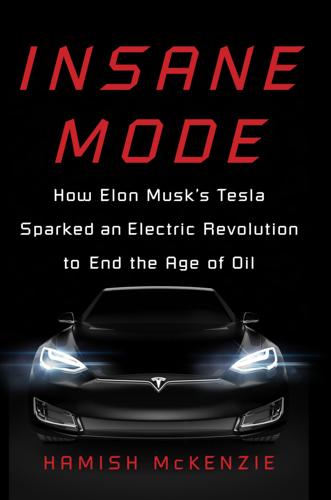
Insane Mode: How Elon Musk's Tesla Sparked an Electric Revolution to End the Age of Oil
by
Hamish McKenzie
Published 30 Sep 2017
In 2009, China had surpassed the United States to become the world’s largest passenger-car market, and its growth wasn’t about to stop anytime soon. At the same time, the Chinese government was encouraging the development of “new energy” vehicles, and automakers in Western markets were facing increasing pressure to limit carbon emissions from their fleets. Like Faraday’s founders, Leach noted that the convergence of electrification, connectivity, car sharing, and autonomous driving technology presented an opportunity to get into the game. “It is without a doubt the most exciting time to be in this industry,” Leach told me as he sipped from a bottle of water. Leach came away from his meeting with Li knowing that the pair would start a company together.
…
“But everything that is changing a car has nothing to do with the auto industry of the past.” Start-ups have spotted the opportunity, too, of course. Uber and Lyft, both based in San Francisco, are hogging the early spoils in the ride-sharing market. Younger companies like Mountain View’s Smartcar (infrastructure for the connected car), San Francisco’s Reviver (digital license plates), and Palo Alto’s Nauto (AI-powered autonomous driving) are pursuing other software-related opportunities. Meanwhile, electric power-train companies like Wrightspeed (heavy-duty trucks), Zero (motorcycles), and Proterra (buses) are also in the area and have collectively raised hundreds of millions of dollars in funding.
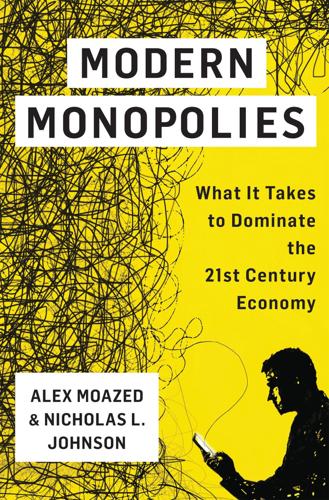
Modern Monopolies: What It Takes to Dominate the 21st Century Economy
by
Alex Moazed
and
Nicholas L. Johnson
Published 30 May 2016
As Android showed, Google is singularly adept at using its core search platform to establish new platforms in other, seemingly unrelated markets. And its recent acquisitions suggest that the company’s platform ambitions don’t stop with mobile phones. It has already released platforms for wearable devices and health data as well as for the connected car, and it’s using Nest, a recent acquisition best known for its Internet-connected thermostat, as a beachhead for entering the connected home. There are even rumors that Google will try to create an Uber competitor. At the same time, Google also is experimenting with an online-shopping and local-delivery platform that would go toe-to-toe with Amazon.
…
As a result, Nokia’s value tanked and its once-vaunted handset division was sold at a fraction of its peak value. Meanwhile, Apple and Google transformed themselves and experienced runaway success, so much so that they have launched a spree of acquisitions as both companies have expanded into other markets like the connected home, connected healthcare, and the connected car. Competitors in those industries should be ready for what’s coming. Because in today’s world, platforms win. Crisis in Motion Just as Nokia was having its burning platform moment, trouble was brewing in Waterloo, Canada. BlackBerry, then known as Research In Motion (RIM), was undergoing its own leadership crisis.

Ghost Road: Beyond the Driverless Car
by
Anthony M. Townsend
Published 15 Jun 2020
mediaId=447. 30how we spend the time . . . has shifted: Chen Song and Chao Wei, “Travel Time Use over Five Decades,” Transportation Research Part A: Policy and Practice 116 (October 2018): 73–96. 30Audi’s concept car of the future: Chris Paukert, “Audi’s Long Distance Lounge Hypes a Smarter Autonomous Future,” Roadshow, CNET, June 14, 2017, https://www.cnet.com/roadshow/news/audi-long-distance-lounge-au tonomous-concept-exclusive-hands-on-video/. 30self-driving vehicles could free up 250 million hours: Roger Lanctot,Accelerating the Future: The Economic Impact of the Emerging Passenger Economy (Strategy Analytics, June 2017), 6, https://newsroom.intel.com/newsroom/wp-content/uploads/sites/11/2017/05/passenger-economy.pdf. 30$150 billion in the US alone: Securing America’s Future Energy, America’s Workforce and the Self-Driving Future: Realizing Productivity Gains and Spurring Economic Growth, June 2018, 22, https://avworkforce.secureenergy.org/wp-content/uploads/2018/06/SAFE_AV_Policy_Brief.pdf. 31asked how they expect to spend their saved time: Eva Fraedrich et al., User Perspectives on Autonomous Driving: A Use-Case-Driven Study in Germany (Berlin, Germany: DLR Institute of Transport Research, 2016), 13; Chris Tennant et al., Executive Summary, Autonomous Vehicles—Negotiating a Place on the Road (London, UK: London School of Economics, 2016), 1–10. 31“Why do all of these interior designs”: Alanis King, “Autonomous Cars Aren’t Even Here Yet and I’m Already Bored with Them,” Jalopnik, September 11, 2017, https://jalopnik.com/autonomous-cars-arent-even-here-yet-and-im-already-bore-1803756153. 31Audi has recruited Disney: Reese Counts, “We Try Audi and Disney’s New In-Car Entertainment System on the Track,” Autoblog, January 9, 2019, https://www.autoblog.com/2019/01/09/audi-disney-holoride-car-vr-entertainment/. 31Kia built a concept car: Laura Bliss, “The ‘Driverless Experience’ Looks Awfully Distracting,” CityLab, January 11, 2019, https://www.citylab.com/transportation/2019/01/self-driving-car-technology-consumer-electronics-show/580027/. 31bigger . . . than the entire auto industry today: Lanctot, Accelerating the Future, 5. 31serve up precision-targeted media: Joann Muller, “One Big Thing: What Your Car Will Know about You,” Axios, May 10, 2019, https://www.axios.com/newsletters/axios-autonomous-vehicles-7b382e7a-e9f1-466b-9c7b-33e4aadc03f4.html; sensors. . . uniquely identify your heartbeat: “Goode Intelligence Forecasts That Biometrics Market for the Connected Car Will Be Just under $1bn by 2023,” Goode Intelligence, November 13, 2017, https://www.goodeintelligence.com/wp-content/uploads/2017/11/Goode-Intelligence-Biometrics-for-the-Connected-Car_Nov17_-news_release-13112017.pdf. 32GM already tracks: Jamie LaReau, “GM Tracked Radio Listening Habits for 3 Months: Here’s Why,” Detroit Free Press, October 1, 2018, https://www.freep.com/story/money/cars/general-motors/2018/10/01/gm-radio-listening-habits-advertising/1424294002/. 32“We know how long they’ve lived”: Phoebe Wall Howard, “Data Could Be What Ford Sells Next as It Looks for New Revenue,” Detroit Free Press, November 13, 2018, https://www.freep.com/story/money/cars/2018/11/13/ford-motor-credit-data-new-revenue/1967077002/. 33odds of a crash instantly double: National Highway Traffic Safety Administration, Overview of the National Highway Traffic Safety Administration’s Driver Distraction Program, DOT HS 811 299, April 2010, https://www.nhtsa. gov/sites/nhtsa.dot.gov/files/811299.pdf. 33road crashes in the US declined: Wikipedia, s.v.
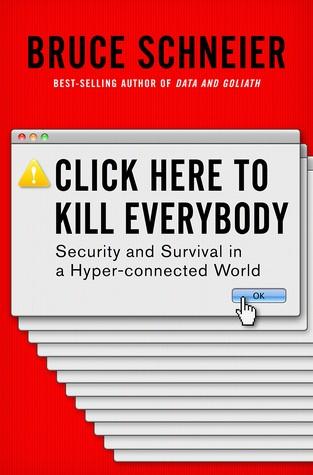
Click Here to Kill Everybody: Security and Survival in a Hyper-Connected World
by
Bruce Schneier
Published 3 Sep 2018
It obviously won’t work for all areas of Internet+ security liability, but it will for some. I believe all these types of arguments will gain traction in relation to the Internet+. Already, regulatory agencies are considering issues of data privacy and computer security. Also, many of the products that are becoming computerized and connected—cars, medical devices, appliances, toys, and so on—are already subject to liability laws. When connected versions of these things start killing people, the courts will take action and the public will demand legislative change. However, today’s software is still more or less in the dark ages of product liability.
…
But as with most human endeavors, we need to continue hammering away to shape the emerging Internet+ into a medium that embodies and enables the human ideals of trust, security, resilience, peace, and justice the best it can. CONCLUSION Bring Technology and Policy Together I return to three scenarios repeatedly in this book. The first is a cyberattack against a power grid. The second is murder by remote hacking of an Internet-connected car. The third is the “click here to kill everybody” scenario, involving replication of a lethal virus by a hacked bio-printer. The first example has already happened. The capability has been demonstrated for the second. The third remains to be seen. Dan Geer, the security expert, once warned: “A technology that can give you everything you want is a technology that can take away everything that you have.”

Robot, Take the Wheel: The Road to Autonomous Cars and the Lost Art of Driving
by
Jason Torchinsky
Published 6 May 2019
When there’s enough robotic vehicles driving around that their vehicle-to-vehicle communications and optimizing are starting to make differences in traffic flow and overall driving behavior, it may be reasonable to require that human-driven cars get in on the conversation as well, by retrofitting human-driven cars—even potentially quite vintage ones—with vehicle-to-vehicle transceivers that would provide some crucial bits of information to the whole connected car landscape: Announce that there’s a human-driven car and its location Provide data on speed, GPS location, throttle position, and if the brakes are actuated or not Turn signal actuation Maybe steering wheel position as well? If human-driven cars broadcast such information on the same vehicle-to-vehicle network that all the connected robotic cars are using, those autonomous vehicles could be made aware of the fact that there are, say, six human-driven cars around me, so I should be aware that these vehicles cannot necessarily be counted on to behave like me or my robotic compatriots.

Age of Context: Mobile, Sensors, Data and the Future of Privacy
by
Robert Scoble
and
Shel Israel
Published 4 Sep 2013
All the auto people we spoke with were focused initially on using contextual technology to improve safety and security. From a pragmatic perspective, carmakers understand that people will adopt new technology fastest when it ensures protection for the people and property they hold dear. Automotive Clouds The connected car may travel many routes in the near-term future. Each requires that the car gather and store lots of data, most of which will be aggregated automatically, without the driver’s knowledge or permission. Carmakers are forming data storage alliances with cloud storage organizations such as Rackspace and Microsoft Azure.

The Age of Surveillance Capitalism
by
Shoshana Zuboff
Published 15 Jan 2019
Brad Jarvis et al., Operator benefits and rewards through sensory tracking of a vehicle, US20150019270 A1, published January 2015, 2015, http://www.google.com/patents/US20150019270. 42. Joao Lima, “Insurers Look Beyond Connected Cars for IOT Driven Business Boom,” Computer Business Review, December 9, 2015, http://www.cbronline.com/news/internet-of-things/insurers-look-beyond-connected-cars-for-iot-driven-business-boom-4748866. 43. Sam Ramji, “Looking Beyond the Internet of Things Hype: Here’s What’s in Store,” VentureBeat, March 28, 2014, http://venturebeat.com/2014/03/28/looking-beyond-the-internet-of-things-hype-heres-whats-in-store. 44.
…
A second patent is even more explicit about triggers for punitive measures.41 It identifies a range of algorithms that activate consequences when the system’s parameters are breached: “a violation algorithm,” “a curfew algorithm,” “a monitoring algorithm,” “an adherence algorithm,” “a credit algorithm.” The consultancy firms are aligned in advising all their insurance clients to get into the surveillance game. AT Kearney acknowledges that the “connected car” is a proving ground for what is to come: “Ultimately, IoT’s true value depends on customers adjusting their behaviors and risk profiles based on feedback from their ‘things.’”42 Health insurers are another target: “Wearable accelerometers” could “improve traceability of their compliance” with prescribed exercise regimes, and “digestible sensors” could track compliance with dietary and medication schedules, “providing higher truth and better granularity than a monthly refill.”43 Deloitte acknowledges that according to its own survey data, most consumers reject telematics on the basis of privacy concerns and mistrust companies that want to monitor their behavior.
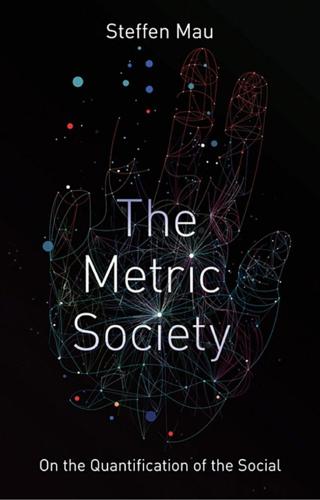
The Metric Society: On the Quantification of the Social
by
Steffen Mau
Published 12 Jun 2017
Even details such as the preferred interior temperature, selected radio station or number of occupants can be effortlessly logged. In response to data protection concerns, automotive and IT groups argue that the industry will fall behind the global competition unless it remains at the cutting edge of connected car development and the extensive data transfer which this entails. Nor is there any shortage of demand for such information – for example, from insurance groups seeking to use it as a basis for customized tariffs. Those who consent to digital monitoring of their driving and mobility habits can, provided they fare well in an actuarial risk assessment, expect a better tariff.
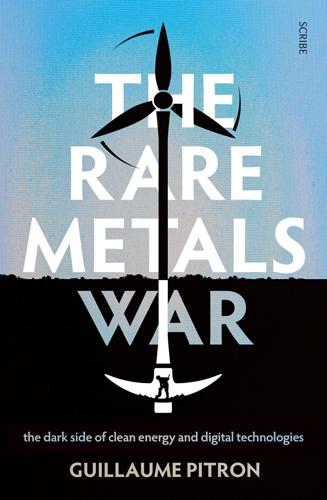
The Rare Metals War
by
Guillaume Pitron
Published 15 Feb 2020
Since its creation in 2013, the London-based social enterprise has organised thousands of events around the world where participants learn how to repair their electronic goods.38 And in the US, iFixit is an online platform with over 50,000 free tutorials on how to repair anything from mobile phones to connected cars.39 Today, Europe and the US want their whites whiter than white, with the EU setting out the ambitious 2030 climate and energy framework,40 and the US beating its carbon dioxide emissions-reduction record in 2017.41 Yet how could Europe possibly hope to achieve its targets if its polluting industries came home?
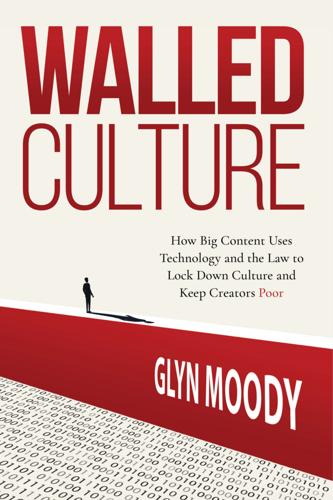
Walled Culture: How Big Content Uses Technology and the Law to Lock Down Culture and Keep Creators Poor
by
Glyn Moody
Published 26 Sep 2022
In September 2021, the Universal Music Group (UMG)600 went public on Amsterdam’s Euronext exchange with a valuation of €45 billion.601 In the prospectus for its initial public offering (IPO),602 it wrote: “Even with its strong growth in recent years, UMG believes streaming is still in the early stages of global penetration and there remains a substantial opportunity for further expansion driven by growth in the number of paid subscribers of digital streaming services, including in established streaming markets which still have room for meaningfully increased adoption. Similarly, in new, high growth markets, the continuing migration of consumers online provides potential for significant growth of ad-supported streaming. This trend is also driven by continued technological innovation across devices and formats, such as voice-controlled speakers, connected cars, intersections with social media and gaming, audio-visual product evolution, which is deepening fans’ engagement and consumption of music. These are also early days of the expansion of streaming music licensing into new lifestyle categories such as digital health and fitness, which have considerable potential for growth.”603 But as Fight for the Future director Evan Greer has highlighted, the rise of streaming has brought with it a new problem for musicians: “[The] analytics of streaming show that people like to listen to the oldies more than they like to listen to new artists.
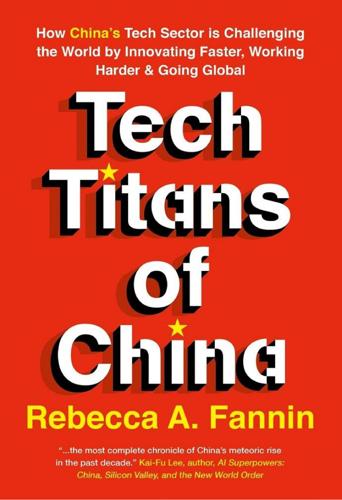
Tech Titans of China: How China's Tech Sector Is Challenging the World by Innovating Faster, Working Harder, and Going Global
by
Rebecca Fannin
Published 2 Sep 2019
But a series of Silicon Valley–style startup deals that Alibaba made in the run-up to its IPO in 2014 ultimately failed either because of product fit mismatches with the China market or missed milestones: TangoME in mobile messaging, Kabam in gaming, and Quixey in mobile search. The big blow to Alibaba’s US ambitions was the block on its Ant Financial deal to buy money transfer firm MoneyGram. Tencent’s Surround-Sound Strategy At Tencent, its laser focus on strategic investments in diverse companies is seen as a tool to get ahead in frontier technologies such as connected cars and internet-facilitated health care. The investment outreach is also a shield against downturns from any further regulatory turmoil in the gaming sector. Tencent has made over 700 such investments and has a good track record. More than 100 of its investee companies have reached valuations exceeding $1 billion and 60 have gone public, one dozen since 2017.

What Would Google Do?
by
Jeff Jarvis
Published 15 Feb 2009
Refrigerators become platforms for these companies to serve us. We have connected home-security systems with sensors and cameras. We have connected home-entertainment systems that can pipe web radio stations, iTunes music and movies, and YouTube videos to any device in the home. We will have connected cars with links to traffic information and feeds of entertainment. We have cameras connected to GPS satellites and to our computers. We have mobile phones that are becoming computers. Any device that produces information, that can be personalized or adjusted, or that communicates with or entertains us will be connected to the internet and to Google.

Frugal Innovation: How to Do Better With Less
by
Jaideep Prabhu Navi Radjou
Published 15 Feb 2015
Instead, companies need to build horizontal ecosystems that integrate their brands with those of other firms – including their rivals – to provide customers with the rich choice and highly personalised experiences that they expect. This new consumer-centric approach has been dubbed “MEcosystems”.6 And although it threatens traditional bricks-and-mortar organisations such as GM and Bank of America, it is a boon for the GAFAs. Indeed, while GM is assembling a vertical partner ecosystem to build connected cars that run like “iPhones on wheels”, Apple and Google are investing in a horizontal ecosystem to provide customers with seamless experiences across multiple devices, whether they are at home, at work, or driving between the two. Similarly, while Bank of America is busy beefing up its mobile banking capabilities, Google is attempting to become a virtual bank by filling its Google Wallet with plastic debit cards.

Black Code: Inside the Battle for Cyberspace
by
Ronald J. Deibert
Published 13 May 2013
You resist initially because it is drawing you in, inevitably. Whether you like it or not, to remain part of civil society you have to deal with it. Cyberspace is everywhere. By the end of 2012 there were more mobile devices on the planet than people: cellphones, laptops, tablets, gaming consoles, even Internet-connected cars. Some estimates put the number of Internet-connected devices now at 10 billion. Cyberspace has become what researchers call a “totally immersive environment,” a phenomenon that cannot be avoided or ignored, increasingly embedded in societies rich and poor, a communications arena that does not discriminate.
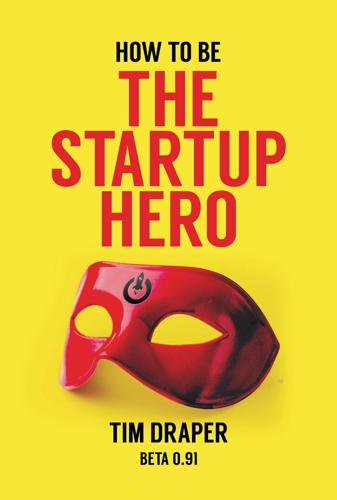
How to Be the Startup Hero: A Guide and Textbook for Entrepreneurs and Aspiring Entrepreneurs
by
Tim Draper
Published 18 Dec 2017
I took a Draper University group of students (who we call “heroes in training” or “HITS”—we dropped the “Super” or “S” part of the acronym for obvious reasons) to the Tesla factory in Fremont, California, to watch as Elon Musk, Tesla’s CEO and one of the most extraordinary and successful entrepreneurs in history, launched the Model S. The plant is enormous. It seems to go for miles in all directions. Robots as big as elephants move around connecting car parts, fastening attachments, and painting the body. The launch was to great fanfare. The Governor of California came and cut the ribbon, the first 10 cars were rolled off the assembly line for us lucky early “Founder Series” buyers, and all 1000 Tesla employees shared a proud moment as they watched all their amazing labor and efforts come to life.
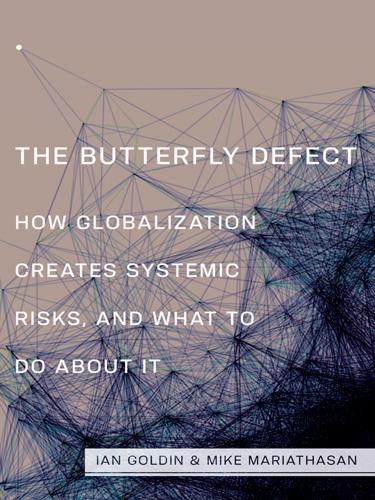
The Butterfly Defect: How Globalization Creates Systemic Risks, and What to Do About It
by
Ian Goldin
and
Mike Mariathasan
Published 15 Mar 2014
GLOBALIZATION AND INTEGRATION Globalization can generally be understood as the process driven by and resulting in increased cross-border flows of goods, services, money, people, information, technology, and culture.2 These flows are multi dimensional, and the number of connections between them is unprecedentedly large and growing exponentially. It is becoming deeper in that these connections penetrate a growing range of human activities. Increasingly not only people but also things are being connected—cars, phones, merchandise, and a rapidly widening range of inanimate objects and sensors. The current period of integration is revolutionary in that a larger set of changes have occurred with a pervasively wider influence than over any comparably short time in previous phases of globalization.3 We consider, in turn, two additional examples of global connectivity that we feel are unique and have significantly lowered the transaction costs of economic integration.

Home Sweet Anywhere: How We Sold Our House, Created a New Life, and Saw the World
by
Lynne Martin
Published 14 Apr 2014
We wanted to visit France, Italy, Spain, Portugal, and England, too, and we had already sent housing deposits for June in Paris and July and August in Florence. We searched the Internet every day for apartments in Spain and Portugal while simultaneously gathering information about European plane connections, car rentals, interim hotel stays, and all the rest of the minutiae that must be addressed. Overall, we were feeling pretty confident about our impending year abroad—until a new friend threw a curveball even Sandy Koufax would be proud of. Judy Butcher, an American traveler whom we had recently met through mutual friends, joined us for cocktails one afternoon.
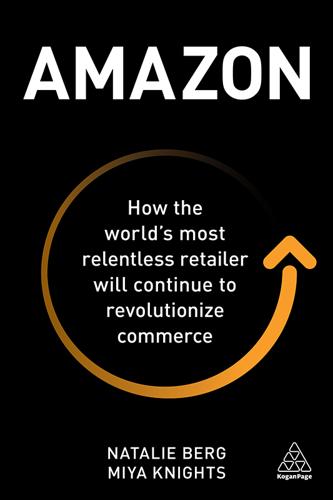
Amazon: How the World’s Most Relentless Retailer Will Continue to Revolutionize Commerce
by
Natalie Berg
and
Miya Knights
Published 28 Jan 2019
Meanwhile, Amazon struck a deal with BMW to integrate Alexa in its cars starting in mid-2018 and already has a similar partnership with Toyota. Even satellite navigation manufacturers are getting in on the act, like Garmin, whose Speak Plus is a 1.5-inch dashboard camera that also comes with Alexa integration. Users will be able to use voice commands to get directions, play music, make phone calls, control smart devices in their Connected Car, and place orders for products and services, like takeaway delivery or collection. But here, Amazon must compete with car manufacturers’ own voice prompt systems, as well as the significant traction that Apple has gained with its CarPlay system to connect Apple’s iOS devices to a car for navigation, music and voice prompt-based integration.
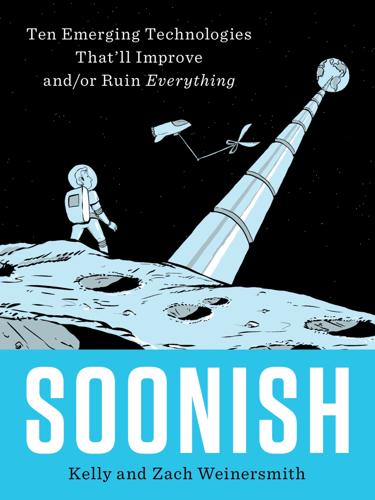
Soonish: Ten Emerging Technologies That'll Improve And/or Ruin Everything
by
Kelly Weinersmith
and
Zach Weinersmith
Published 16 Oct 2017
Maybe you wake up one day and the dish has run away with the spoon. It’s bad enough you lost your stuff, but now you’re wondering exactly where the knife went. If matter reshapes itself for engineering reasons, the possibility for hackers to subtly cause an adjustment is dangerous. Airlines are already dealing with this sort of thing, as are Internet-connected cars. It’s not entirely clear whether programmable matter would add additional dangers or just amplify ones that already exist. Dr. Demaine points out that hacking is a major problem for software, and we may be able to control hardware hacking a bit more easily than software hacking. He suggests you could have a simple physical mechanism to make sure all changes were done only after a local human being gave permission.
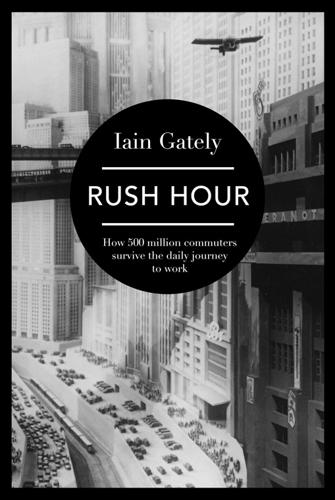
Rush Hour: How 500 Million Commuters Survive the Daily Journey to Work
by
Iain Gately
Published 6 Nov 2014
In the opinion of Chunka Mui, an innovations strategist writing for Forbes magazine, ‘the issue is when, not if – and when is sooner than you think’. Nissan has promised the world affordable autonomous cars by 2020. Google will have a hundred of its Google-bugs on Californian test tracks, and possibly roads in 2014; the University of Michigan is building a 32-acre model village to test self-driving ‘connected cars’; Volvo, in conjunction with the city of Gothenburg, has announced a pilot scheme scheduled to commence in 2017, in which a fleet of a hundred of its driverless cars will be set loose on an initial thirty miles of public roads described as ‘typical commuter arteries’. Meanwhile the British city of Milton Keynes has plans to introduce a fleet of self-directed ‘pods’ in 2015, which will run along a dedicated track from its centre to its railway station.

Choked: Life and Breath in the Age of Air Pollution
by
Beth Gardiner
Published 18 Apr 2019
But, in a world powered by fossil fuels, we all travel from place to place, use electricity, heat our homes, and few of us fully grasp the effects. The gains that come when air gets cleaner are similarly difficult to see. There’s no doubt reducing pollution saves lives. But those whose years are lengthened, and those who love them, never know it. Emergency room visits are averted and health care dollars stay in pockets, but the line connecting car or power plant regulations with the size of medical budgets isn’t easy to make out. Once I’d grasped the dimensions of this hiding-in-plain-sight threat, I wanted to see, up close, how it was playing out around the world. And why. Is air pollution an inevitable part of modern life, something we must resign ourselves to living with?

Frenemies: The Epic Disruption of the Ad Business
by
Ken Auletta
Published 4 Jun 2018
“Artificial intelligence will say, ‘This guy buys a car every two years.’ Six months before the two years come up, they inundate him with messages: ‘We know it’s time for you to be looking for a new car. Here’s two thousand dollars off if you come in next week to buy a car.’ That’s relevant.” Digitally connected cars will have smart windshields that flash to the driver who is low on gas where the nearest gas station is located, along with an offer of a free coffee. Or a food order can be placed and picked up at a nearby fast food restaurant. Of course, exchanging intrusively annoying ads for intrusively annoying marketing messages may be no less irritating to consumers.

Human Compatible: Artificial Intelligence and the Problem of Control
by
Stuart Russell
Published 7 Oct 2019
In regimes where this technology is adopted for the purposes of control, it will be as if every citizen had their own personal Stasi operative watching over them twenty-four hours a day.3 Even in the civilian sphere, in relatively free countries, we are subject to increasingly effective surveillance. Corporations collect and sell information about our purchases, Internet and social network usage, electrical appliance usage, calling and texting records, employment, and health. Our locations can be tracked through our cell phones and our Internet-connected cars. Cameras recognize our faces on the street. All this data, and much more, can be pieced together by intelligent information integration systems to produce a fairly complete picture of what each of us is doing, how we live our lives, who we like and dislike, and how we will vote.4 The Stasi will look like amateurs by comparison.

Platform Revolution: How Networked Markets Are Transforming the Economy--And How to Make Them Work for You
by
Sangeet Paul Choudary
,
Marshall W. van Alstyne
and
Geoffrey G. Parker
Published 27 Mar 2016
The analytics derived from this data will help banks target small businesses with financial products for the first time in a highly relevant manner. Likewise, some banks are offering digital services to assist consumers with real estate searches in the hope of gathering data that could indicate lending opportunities. Insurance is another space that is set to be rapidly transformed in the age of data platforms. Connected cars are now gathering real-time data about driving behavior, and insurance companies are leveraging such data to offer customized premium pricing based on user-specific driving habits. The growing popularity of wearable devices for tracking health and wellness indicators will create opportunities for health insurance companies to offer similarly customized insurance packages.
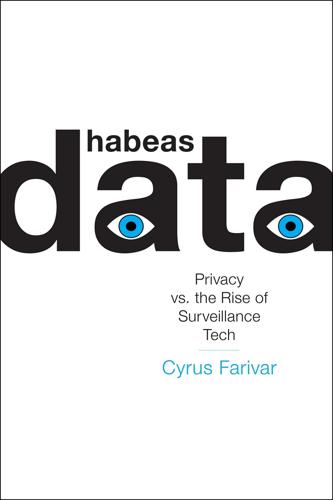
Habeas Data: Privacy vs. The Rise of Surveillance Tech
by
Cyrus Farivar
Published 7 May 2018
Surveillance Industry’s Leading Lawful Intercept Service Bureau,” December 10, 2013. Available at: http://www.subsentio.com/ssio_pr/subsentio-names-marcus-thomas-chief-technology-officer/. “Everything is digging”: Author’s interview with Marcus Thomas, August 2, 2017. One notable and creative: Thomas Fox-Brewster, “Cartapping: How Feds Have Spied on Connected Cars for 15 Years,” Forbes, January 15, 2017. Available at: https://www.forbes.com/sites/thomasbrewster/2017/01/15/police-spying-on-car-conversations-location-siriusxm-gm-chevrolet-toyota-privacy/. ATX had to remotely activate: In the matter of the emergency application for an order compelling ATX Technologies to show cause, 2:01-cv-01495-LDG, USDC Nevada, December 19, 2001.
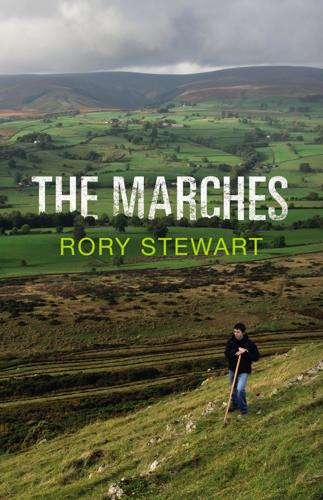
The Marches: A Borderland Journey Between England and Scotland
by
Rory Stewart
Published 14 Jul 2016
When Susan’s family first arrived in the 1960s, the grass banks by the underpasses were still largely bare, the trees no more than tiny saplings. Residents had to cross unpaved roads, hopping between loose flagstones. But the rapid Swedish construction method was pushing up a steady 1,000 houses a year, encircled by a ring road. Underpasses connected car-parking space to Scotland’s largest indoor mall. Livingston was dominated by Japanese electronics companies. It had grown from a hamlet into one of the ten largest towns in Scotland, and the centre of Scotland’s silicon glen, pumping out about a third of the PCs in Europe and most of Europe’s ATMs.
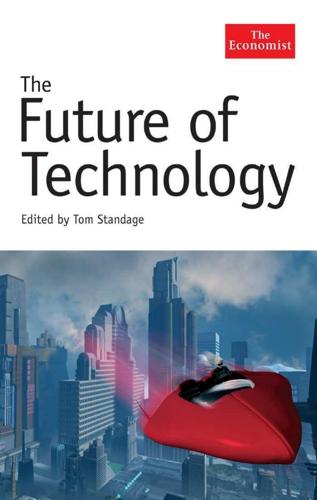
The Future of Technology
by
Tom Standage
Published 31 Aug 2005
Currently, the ces technophiles are excited about two trends in particular. The first is that every single electronic device will soon be connected to the internet. This includes the obvious, such as mobile phones and tv sets, and the less obvious, such as shirts and nappies that carry tiny radio-frequency identification (rfid) tags. Microsoft talks about its “connected-car” project, which conjures up images of drivers rebooting on the motorway. But the direction is clear. In future, most people in rich countries will be “always on”, and will connect to the internet through something other than a pc. The other, and related, big idea concerns what some vendors call “the digital home” and others the “e-home”.

Software Design for Flexibility
by
Chris Hanson
and
Gerald Sussman
Published 17 Feb 2021
We will then use an extended example, a chess referee, to explore more complex uses of graphs and pattern matching on graphs. 4.5.1 Lists as graphs We start with the simple but familiar world of lists. The cons cells are the nodes, which will be made with g:cons and whose car and cdr will be implemented as edges labeled with car and cdr and accessed by g:car and g:cdr: (define (g:cons car cdr) (let ((pair (make-graph-node ’pair))) (pair ’connect! ’car car) (pair ’connect! ’cdr cdr) pair)) (define (g:car pair) (pair ’edge-value ’car)) (define (g:cdr pair) (pair ’edge-value ’cdr)) To represent lists as graphs we need a special end marker for lists: (define nil (make-graph-node ’nil)) (define (g:null) nil) (define (g:null? object) (eqv?

CTOs at Work
by
Scott Donaldson
,
Stanley Siegel
and
Gary Donaldson
Published 13 Jan 2012
Garrison: Well, think about it. What if I didn't have to wait until 4:00? If you go to NPR.org right now, you can't stream “All Things Considered.” And there's a reason for that because we can't cut out the local stations. S. Donaldson: Right. Garrison: What about Pandora? What about NPR on Pandora? What about connected cars? So when you are in Iowa, maybe you want to listen to WAMU, and not your local IOWA station. What does that mean to their economy and to their fundraising? If you do a little research on that; it is the disruptor in my view. G. Donaldson: It's a game changer. Garrison: It's a game changer. And so what it means, in order to stay relevant, the local stations, once again in my view, have to focus on local content so that they stay relevant.
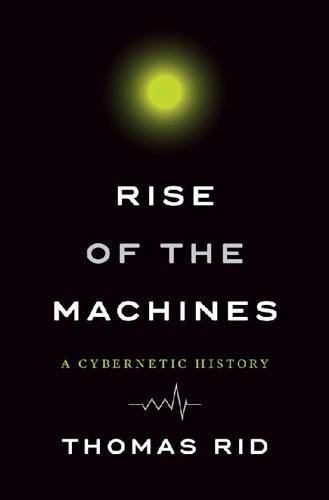
Rise of the Machines: A Cybernetic History
by
Thomas Rid
Published 27 Jun 2016
Decades after Wiener and his acolytes dreamt of autonomous machines and decades after NASA flirted with putting cyborgs into outer space, microprocessing and networking technology have radically transformed lives, work, play—even human bodies. Often the cybernetic origin remains invisible: the new discipline’s founding challenge—guiding antiaircraft fire—has long been overcome. Computer-controlled pacemakers and insulin pumps are taken for granted, brakes and engines of internet-connected cars are run by software, and flying airliners have become ever more automated. Social media form a connection with communities, sometimes even independent from geographical location. Cryptography is widely used, often without users noticing it. Robots don’t just toil in factories. Computers are an integral element of intelligence collection and even military operations, with battle-ready drones circling the skies over the world’s most contested war zones, assassinating tiny humans below when remotely commandeered to do so.

Smart Cities: Big Data, Civic Hackers, and the Quest for a New Utopia
by
Anthony M. Townsend
Published 29 Sep 2013
An alumnus of the MIT Media Lab living in the Iraqi capital of Baghdad has reportedly designed an app that lists recent kidnappings and the going rate for ransom. And Apple’s Siri, which hails from Silicon Valley, might be the most suburban technology ever created: its voice recognition is perfect for connected cars but completely useless on noisy city sidewalks. Shirky’s students built situated software because, for the first time, they could. “Making form-fit software for a small group of users has typically been the province of banks and research labs,” Shirky explained. “The kinds of scarcities the Web School was meant to address—the expense of adequate hardware, the rarity of programming talent, and the sparse distribution of potential users—are no longer the constraints they once were.”11 Today, the infrastructure that’s needed to build and distribute a smartphone app is already in place, and either free or rentable; it costs almost nothing to turn a novel idea about how to interact with the city into a piece of software that meets the needs of a handful of people in close proximity.

The Patient Will See You Now: The Future of Medicine Is in Your Hands
by
Eric Topol
Published 6 Jan 2015
The marked connectivity is taken further when one considers the Internet of Things (IoT). That is the unbridled growth of not only people but also devices that are wirelessly connected via the Internet. The projections range from twenty-eight to fifty billion connected devices by 2020,28 and the implications are profound. This doesn’t just refer to Nest thermometers or connected cars—the bulk of the growth is actually expected to come from sensors, particularly wearable ones that track medical data. As shown in Figure 1.3, the average person is projected to have between six and seven connected devices by 2020. This represents a quadrupling of connected devices in the span of a decade with only 10 percent of growth of the population during that time.

The Future Is Asian
by
Parag Khanna
Published 5 Feb 2019
As Asian cities prepare for driverless cars and buses on their street, policy makers, regulators, urban planners, and insurance companies are developing new frameworks to govern them. Even the Western firms ranked most likely to get self-driving cars onto the road first—including Ford, Renault, Daimler, Volkswagen, and BMW—will be looking to do so in Asia. In South Korea, Hyundai and Kia have partnered with Cisco Systems and other US IT companies to advance connected car communications. Baidu’s open-source approach to driverless-car software development, called Apollo, has lured Intel, Daimler, and Ford to contribute resources. Baidu might be on a collision course with Didi Chuxing—or perhaps it will simply buy it. US firms are now copying Chinese innovations.

Mastering Blockchain, Second Edition
by
Imran Bashir
Published 28 Mar 2018
IoT can be defined as a network of computationally intelligent physical objects (any object such as cars, fridges, industrial sensors, and so on) that are capable of connecting to the internet, sensing real-world events or environments, reacting to those events, collecting relevant data, and communicating it over the internet. This simple definition has enormous implications and has led to exciting concepts, such as wearables, smart homes, smart grids, smart connected cars, and smart cities, that are all based on this basic concept of an IoT device. After dissecting the definition of IoT, four functions come to light as being performed by an IoT device. These include sensing, reacting, collecting, and communicating. All these functions are performed by using various components on the IoT device.

Your Computer Is on Fire
by
Thomas S. Mullaney
,
Benjamin Peters
,
Mar Hicks
and
Kavita Philip
Published 9 Mar 2021
Digital culture scholar Tarleton Gillespie notes that social media companies such as YouTube and Facebook deploy the term “platform” strategically, using its connotations to position themselves as neutral facilitators and downplay their own agency. Recent public debates about the legal and regulatory status of Uber and Airbnb illustrate this strategy. Unlike taxi companies and hotels, these enterprises started with neither cars nor buildings, presenting themselves instead as platforms that “merely” connect car or property owners with potential customers. In this context, “platform” is both “specific enough to mean something, and vague enough to work across multiple venues for multiple audiences,” such as developers, users, advertisers, and (potentially) regulators.14 Thus, a key role of what we might call “platform discourse” is to render the platform itself as a stable, unremarkable, unnoticed object, a kind of empty stage, such that the activity of users—from social media posts to news, videos, reviews, connecting travelers with drivers and apartments for rent—obscures its role as the enabling background.

Future Crimes: Everything Is Connected, Everyone Is Vulnerable and What We Can Do About It
by
Marc Goodman
Published 24 Feb 2015
School Faces FBI Probe,” ABC News, Feb. 22, 2010. 3 In one city alone: Loretta Chao, “Cisco Poised to Help China Keep an Eye on Its Citizens,” Wall Street Journal, July 5, 2011. 4 “as small as six inches”: John Biggs, “DARPA Builds a 1.8-Gigapixel Camera,” TechCrunch, Jan. 28, 2013. 5 As a result, cameras can perform: “Fighting Terrorism in New York City,” 60 Minutes, Sept. 26, 2011. 6 One young woman: “Miss Teen USA: Screamed upon Learning She Was ‘Sextortion’ Victim,” CNN, Sept. 28, 2013. 7 Abrahams carried out his attack: Aaron Katersky, “Miss Teen USA 1 of ‘Half-Million’ ‘Blackshades’ Hack Victims,” ABC News, May 19, 2014. 8 “All of a sudden”: Amy Wagner, “Hacker Hijacks Baby Monitor,” Fox News, April 22, 2014. 9 “Wake up … you”: “Parents Left Terrified After Man Hacked Their Baby Monitor and Yelled Abuse at Them and Their 2-Year-Old Daughter,” Mail Online, Aug. 13, 2013. 10 Nearly 70 percent: Kim Zetter, “Popular Surveillance Cameras Open to Hackers, Researcher Says,” Wired, May 15, 2012. 11 As a consequence: Kelly Jackson Higgins, “Millions of Networked Devices in Harm’s Way,” Dark Reading, Jan. 29, 2013. 12 Without the consent: Katie Notopoulos, “Somebody’s Watching: How a Simple Exploit Lets Strangers Tap into Private Security Cameras,” Verge, Feb. 3, 2012. 13 Why not hack: Jim Finkle, “US Security Expert Says Surveillance Cameras Can Be Hacked,” Reuters, June 18, 2013. 14 That’s exactly what a team: Mark Buttler, “Crown Casino Hi-Tech Scam Nets $32 Million,” Herald Sun (Melbourne), March 14, 2013. 15 Confident of his bets: Kim Zetter, “Crooks Spy on Casino Card Games with Hacked Security Cameras, Win $33M,” Wired, March 15, 2013. 16 A car rolling off: Robert N. Charette, “This Car Runs on Code,” IEEE Spectrum, Feb. 1, 2009. 17 All these embedded electronics: Ibid.; Chris Bryant, “Manufacturers Respond to Car-Hacking Risk,” Financial Times, March 22, 2013. 18 While event-data-recording black boxes: Craig Timberg, “Web-Connected Cars Bring Privacy Concerns,” Washington Post, March 5, 2013. 19 “[We know] everyone”: “GPS Users Beware, Big Auto Is Watching: Report,” CNBC.com, Jan. 9, 2014. 20 GM’s OnStar: John R. Quain, “Changes to OnStar’s Privacy Terms Rile Some Users,” Wheels (blog), New York Times, Sept. 22, 2011. 21 Oh, and that convenient: Declan McCullagh and Anne Broache, “FBI Taps Cell Phone Mic as Eavesdropping Tool,” CNET, Dec. 1, 2006; Bruno Waterfield and Matthew Day, “EU Has Secret Plan for Police to ‘Remote Stop’ Cars,” Telegraph, Jan. 29, 2014. 22 In just the first six months: Jeff Bennett, “GM Adds 8.45 Million Vehicles to North America Recall,” Wall Street Journal, June 30, 2014; Christopher Jensen, “An Increase in Recalls Goes Beyond Just G.M.,” New York Times, May 29, 2014. 23 When the deeply complex: James R.

The Stack: On Software and Sovereignty
by
Benjamin H. Bratton
Published 19 Feb 2016
Some doctors prescribe health care Apps in addition to medications as part of a therapeutic regime, and the race to design low-cost clinical tools (a “tricorder”) redefines the administration of medical equipment.43 Cars are already App platforms, but the real innovation in specific Apps for transportation hardware is still to come. Driverless cars (or cars that are simply more autonomous along a generic spectrum) would change what passengers are expected to do and not do while hurtling through the City layer and on what events they are expected to focus their attention. Apps that connect cars to work or play, some using windows as screens, will, for better or worse, further virtualize the experience of automotive drift. Some cars might be bound to an Android or iOS platform lock-in, or new manufacturer-specific operating systems might support neither or both, but cars already contain multiple software and hardware systems, and by extending these to control how cars navigate streets and how passengers interact with the world and one another, it's not difficult to see how the redefinition of “a car” as a high-velocity computing platform, enveloping the user inside, initiates new genres of in-motion Apps.

Scandinavia
by
Andy Symington
Published 24 Feb 2012
Oslo Torp, 123km south of the city, and Rygge Airport, 60km southeast of Oslo, are secondary airports. Boat For details of international ferry services, Click here . Bus Long-distance buses arrive and depart from the Galleri Oslo Bus Terminal ( Schweigaards gate 8, Galleri Oslo) ; the train and bus stations are linked via an overhead walkway for easy connections. Car & Motorcycle The main highways into the city are the E6 from the north and south, and the E18 from the southeast and west. Each time you enter Oslo, you must pass through (at least) one of 19 toll stations and pay Nkr25. Train All trains arrive and depart from Oslo S in the city centre.